Start: 20th November 2025 | End: 28th November 2025 | Meeting location: Kota Kinabalu | Spaces available: 0
Included in the tour:
- Expert herpetologist guides.
- Accommodation.
- Transport.
- Food & drinks.
- National park entry/ranger/guide fees.
- Permits.
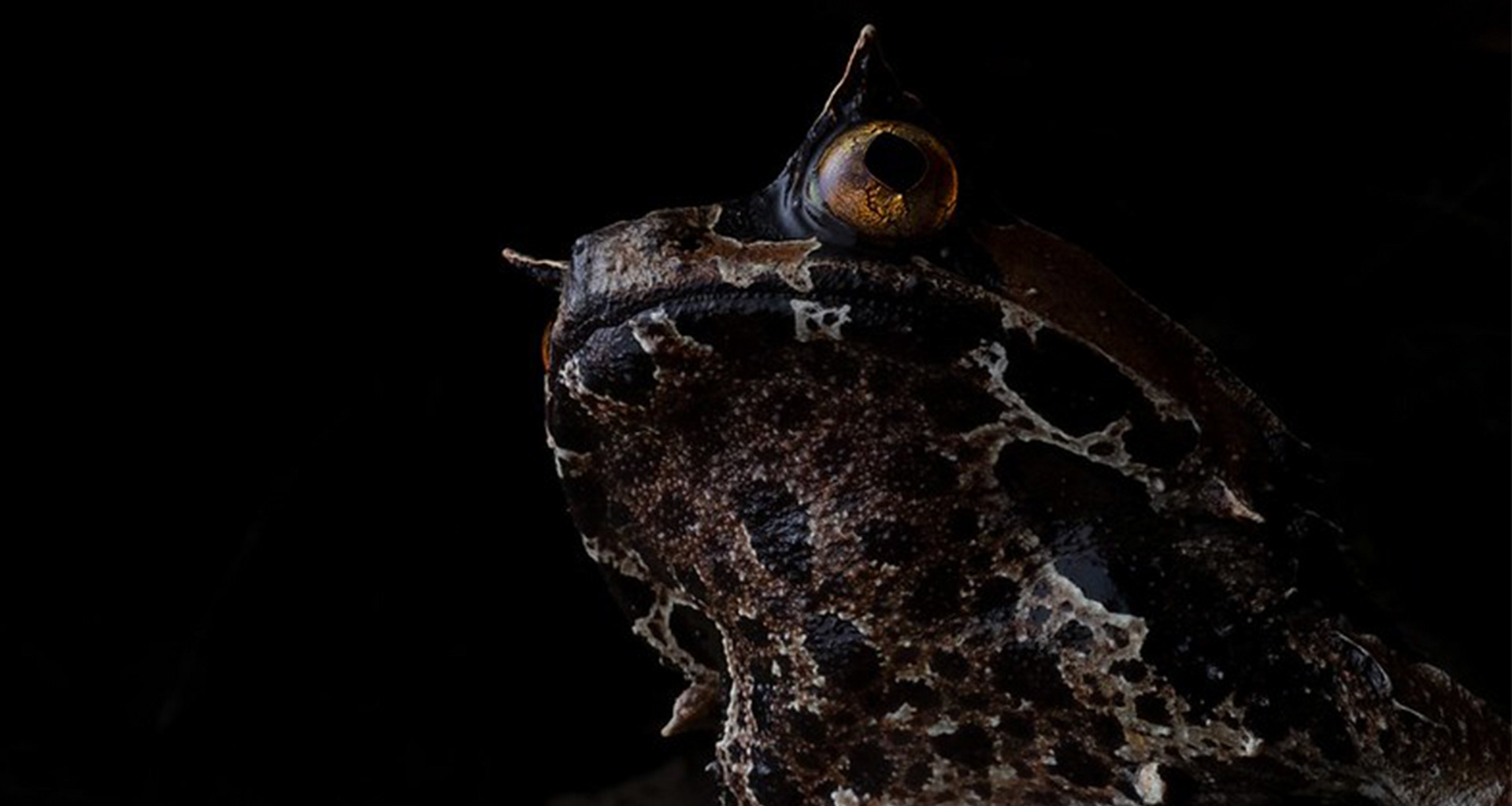
Kobyashi's horned frog (Pelobatrachus kobyashii).
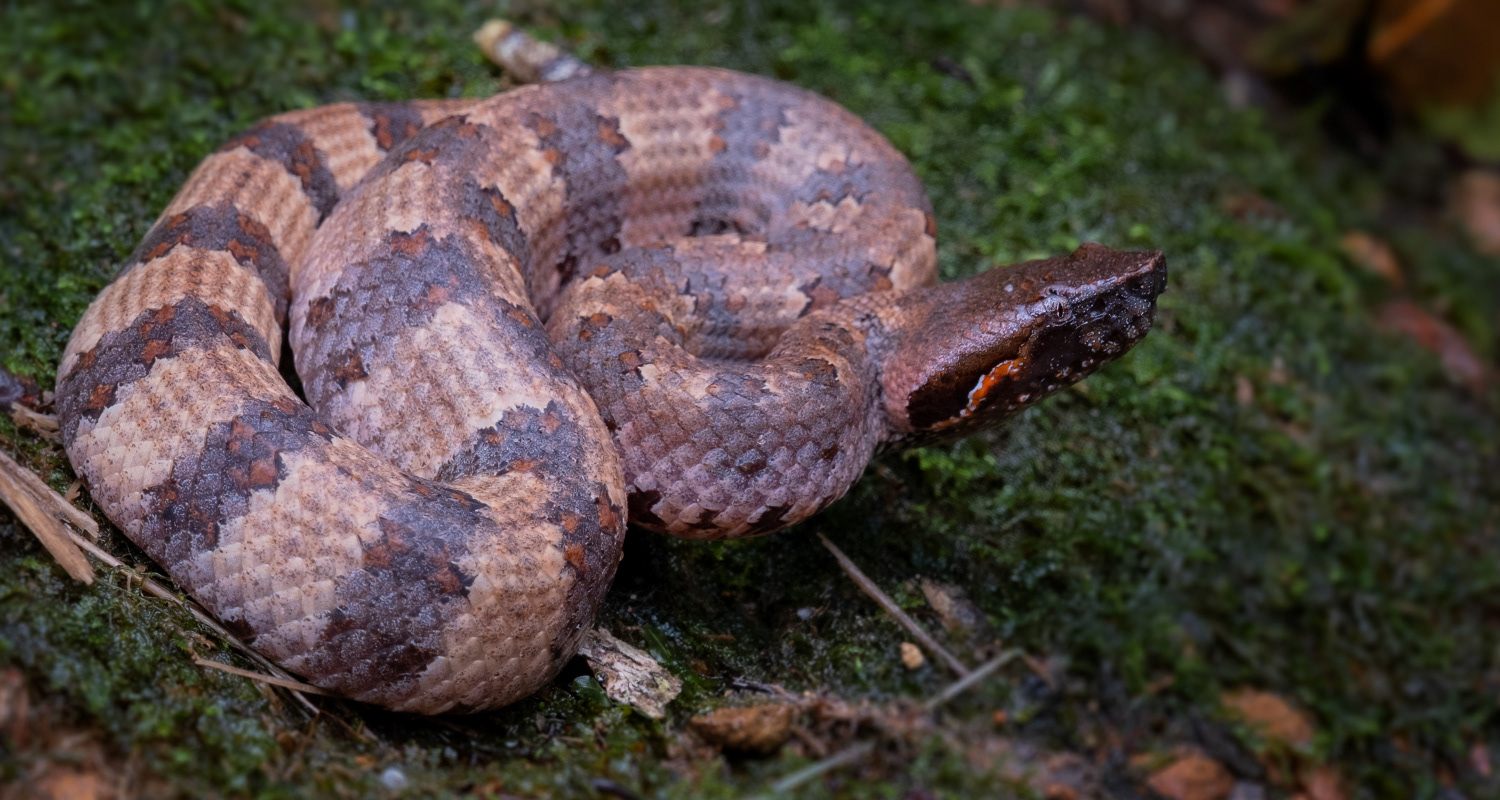
Chasen's mountain pit viper (Garthius chaseni).
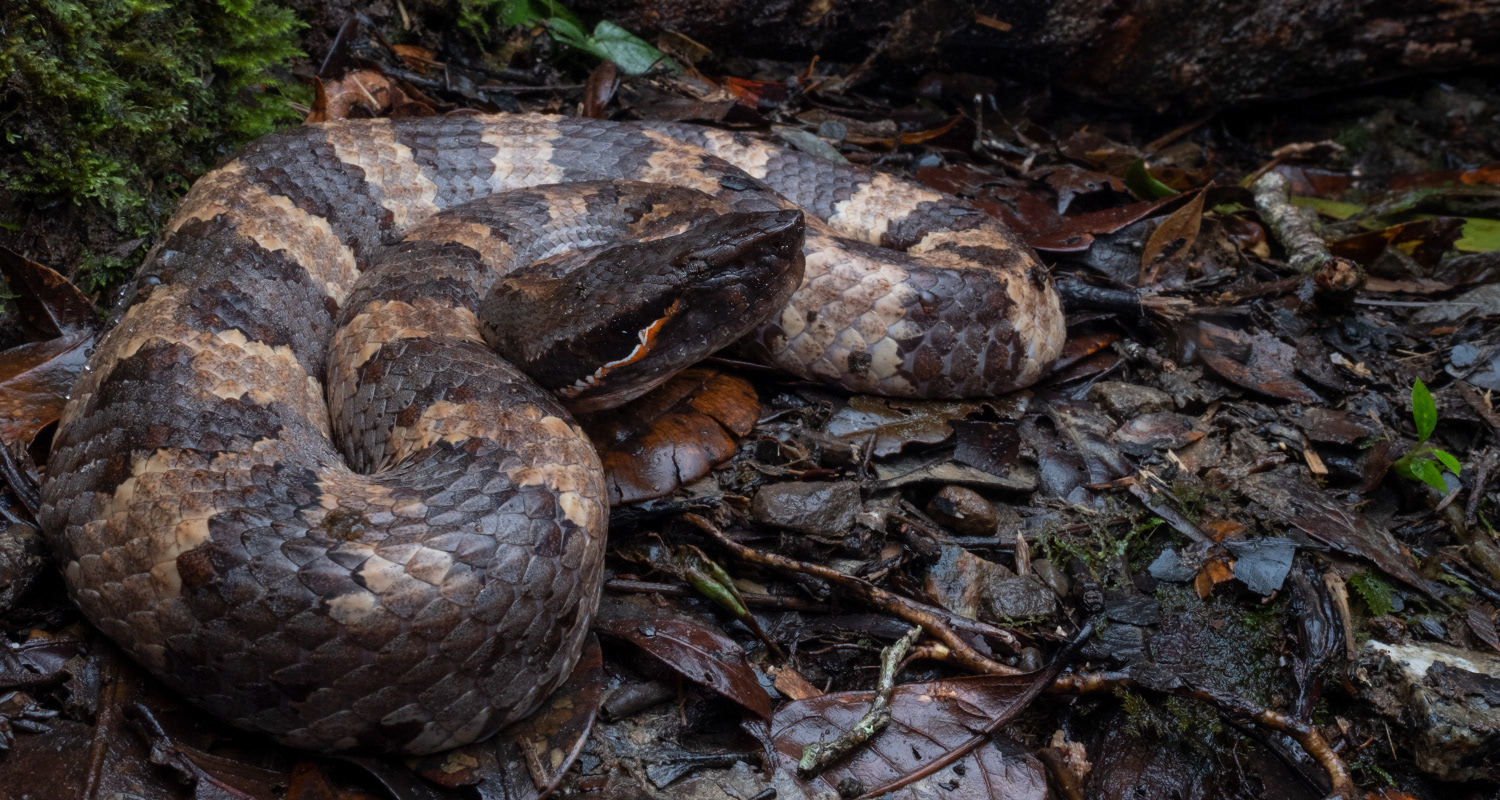
Chasen's mountain pit viper (Garthius chaseni).
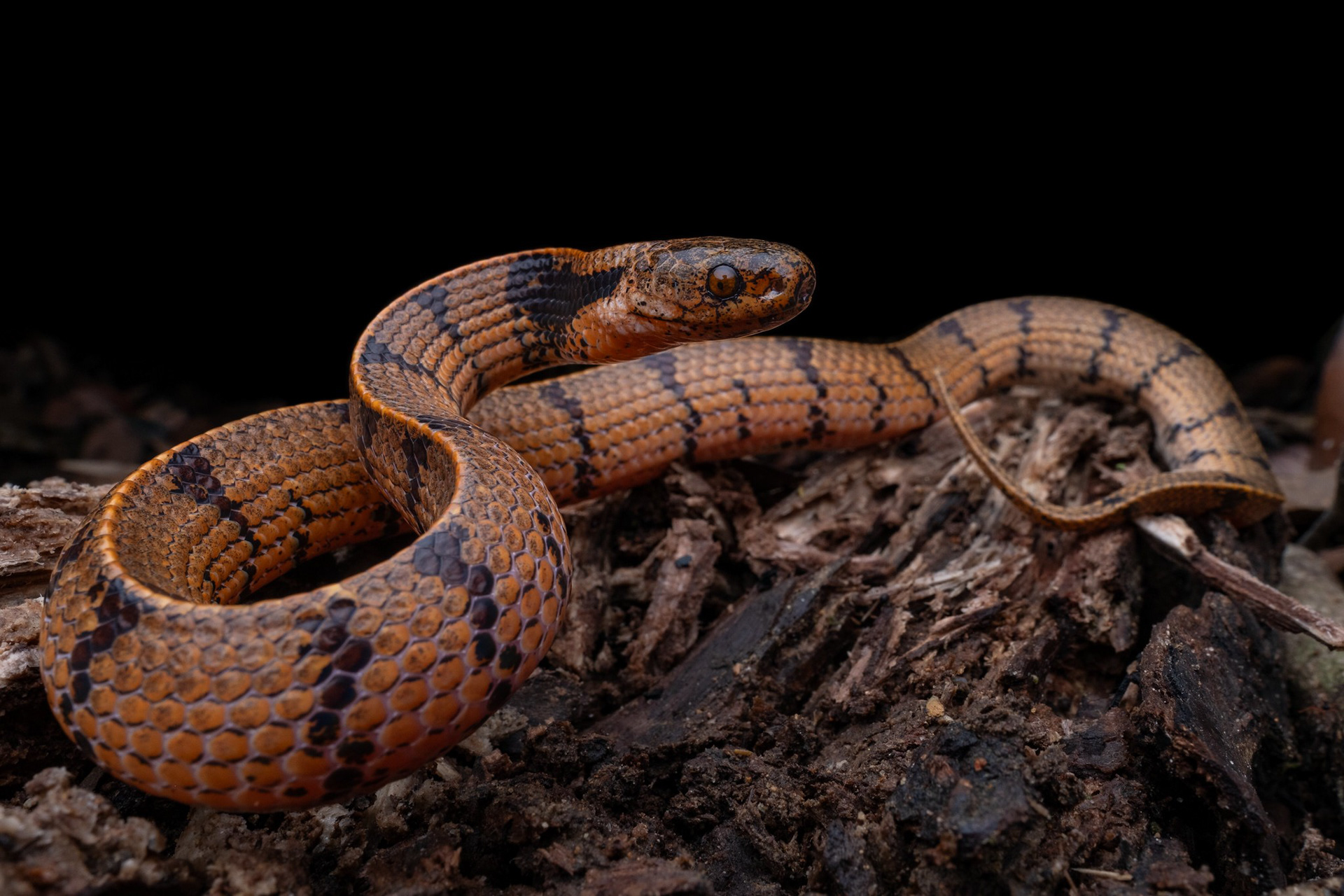
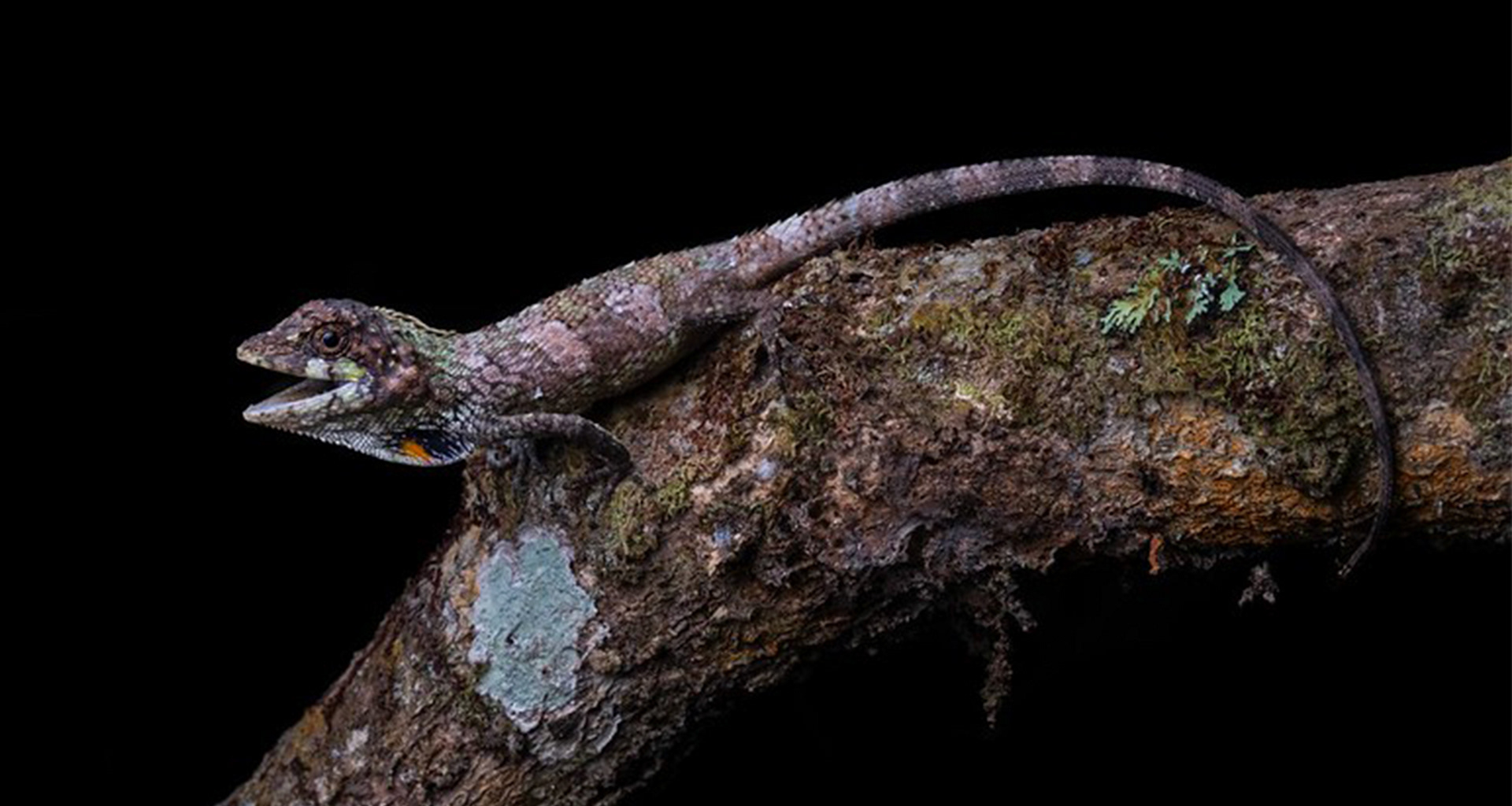
Extremely rare black-throated agamid (Complicitus nigrigularis)

Kinabalu gliding gecko (Gekko rhacophorus)
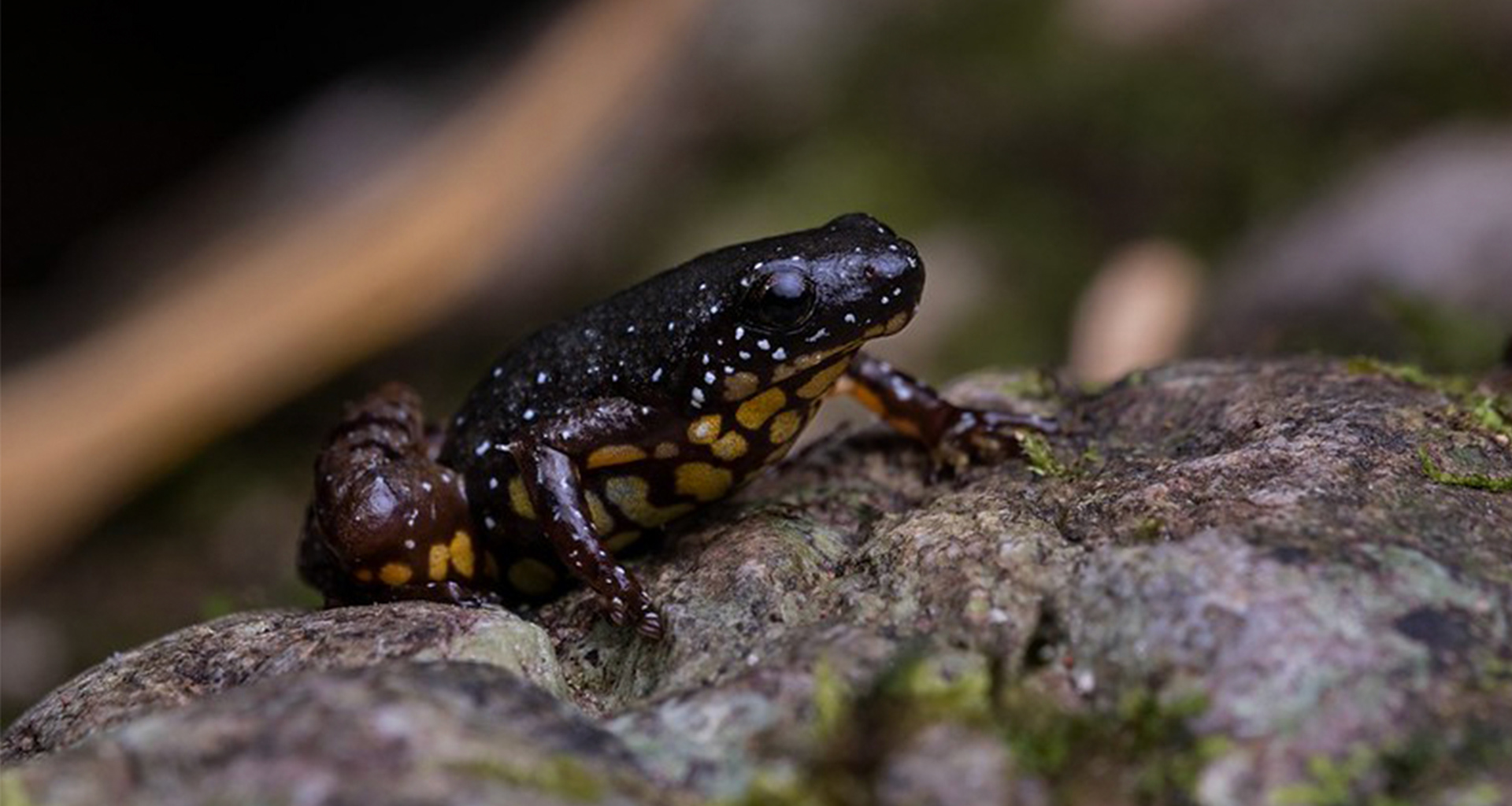
Saffron-bellied frog (Chaperina fusca)
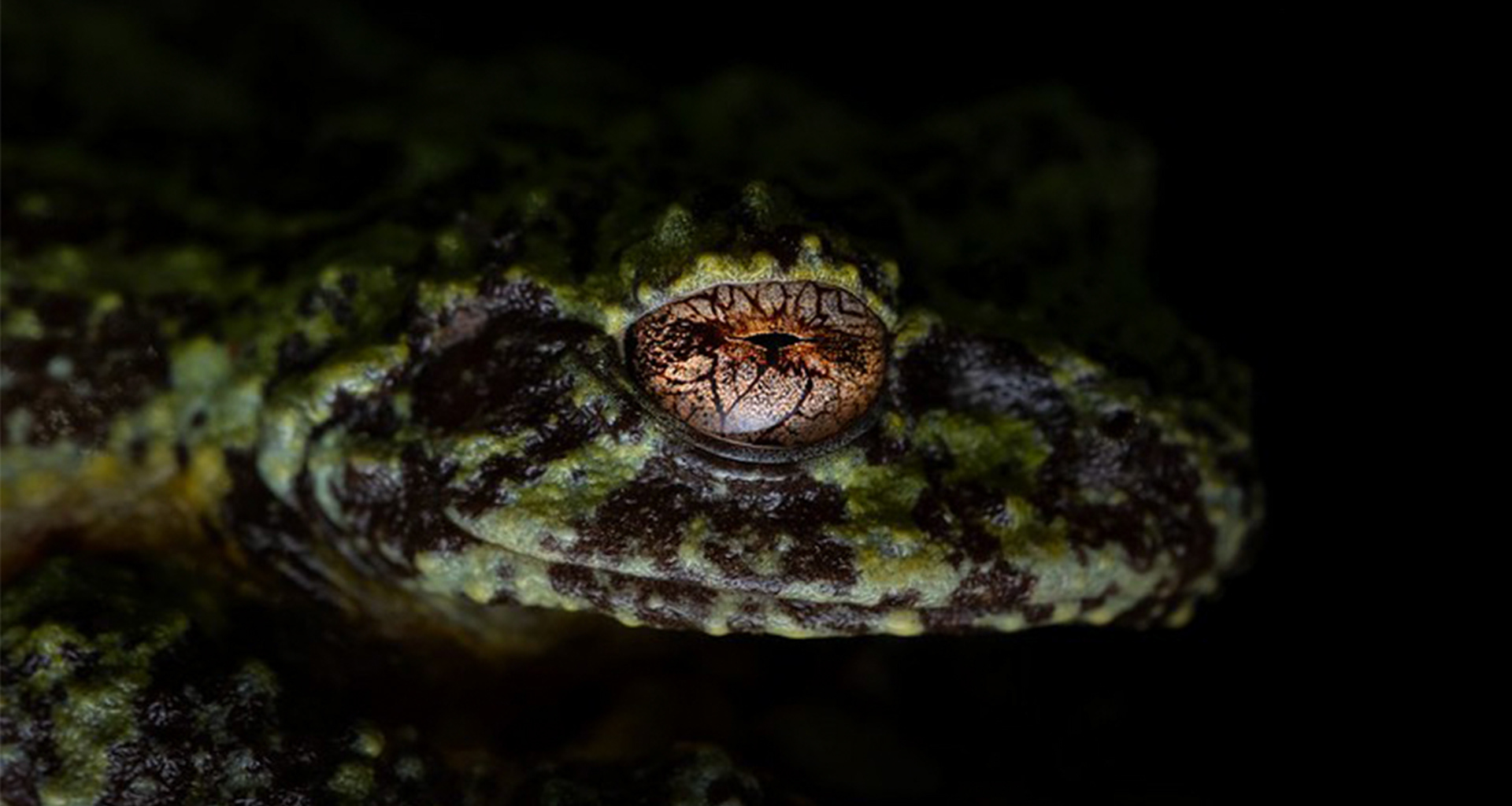
Kinabalu green bush frog (Philautus bunitus)
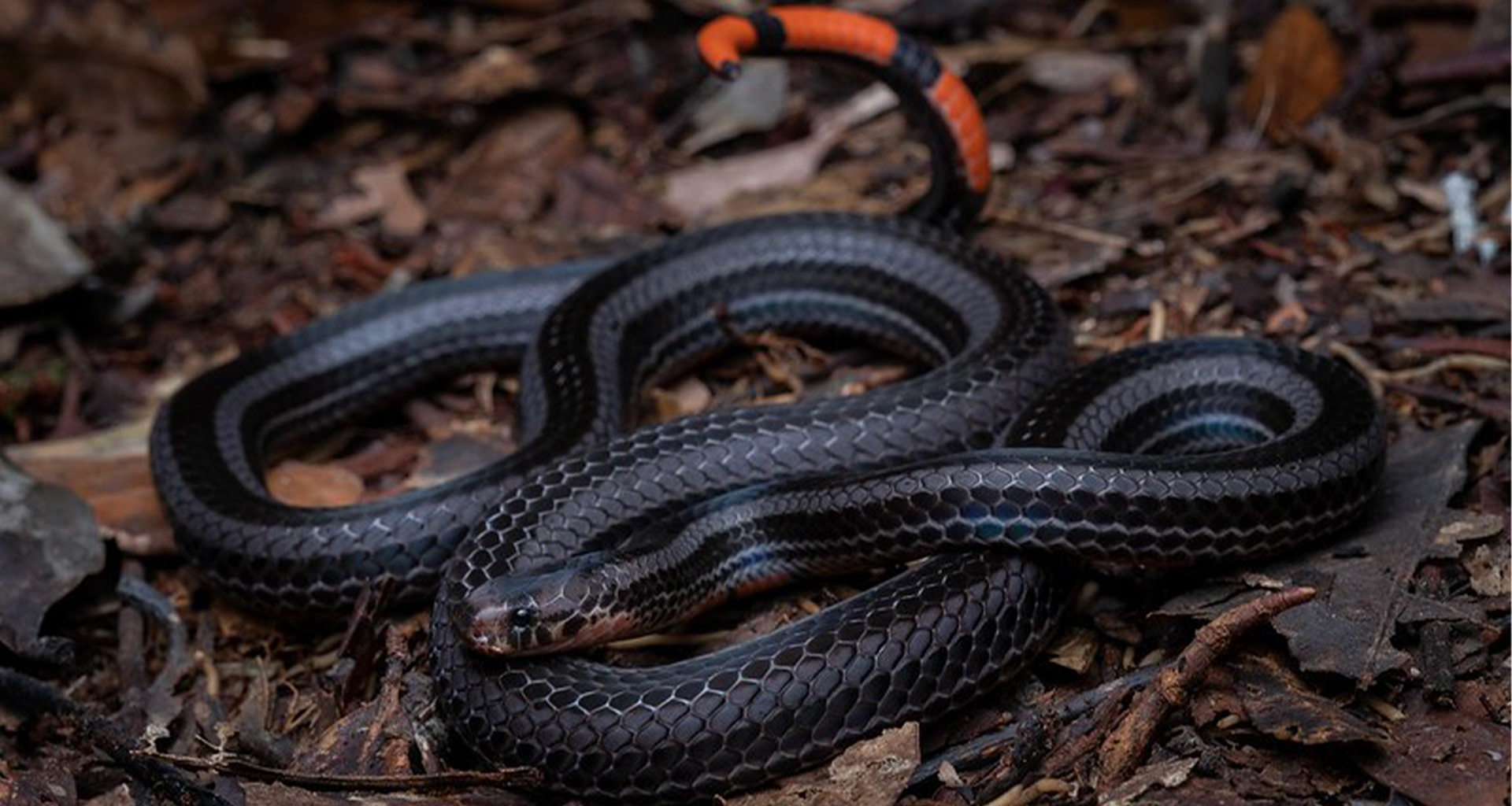
Black-striped coral snake (Calliophis nigrotaeniatus)
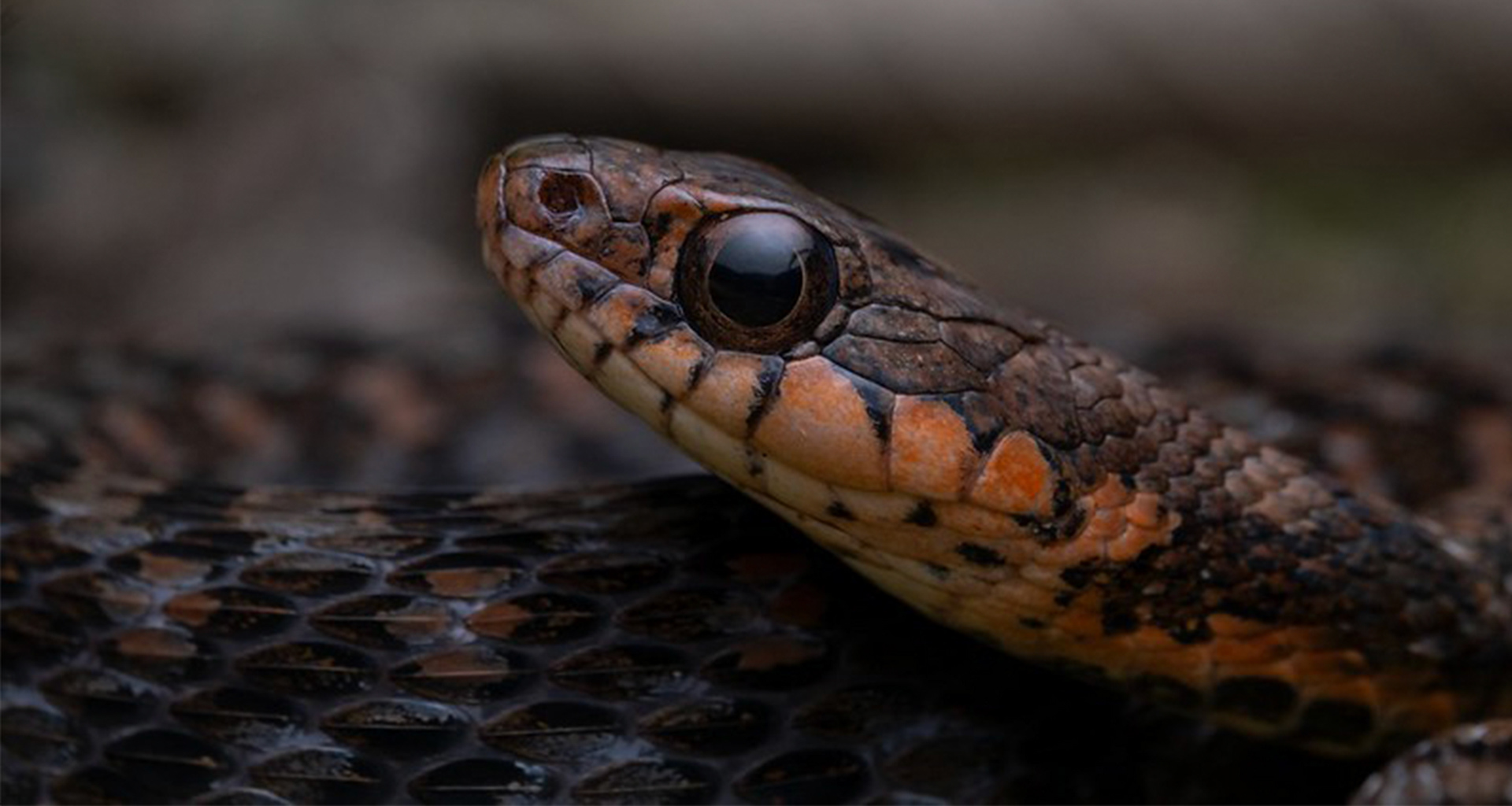
Sarawak keelback (Hebius sarawacense)
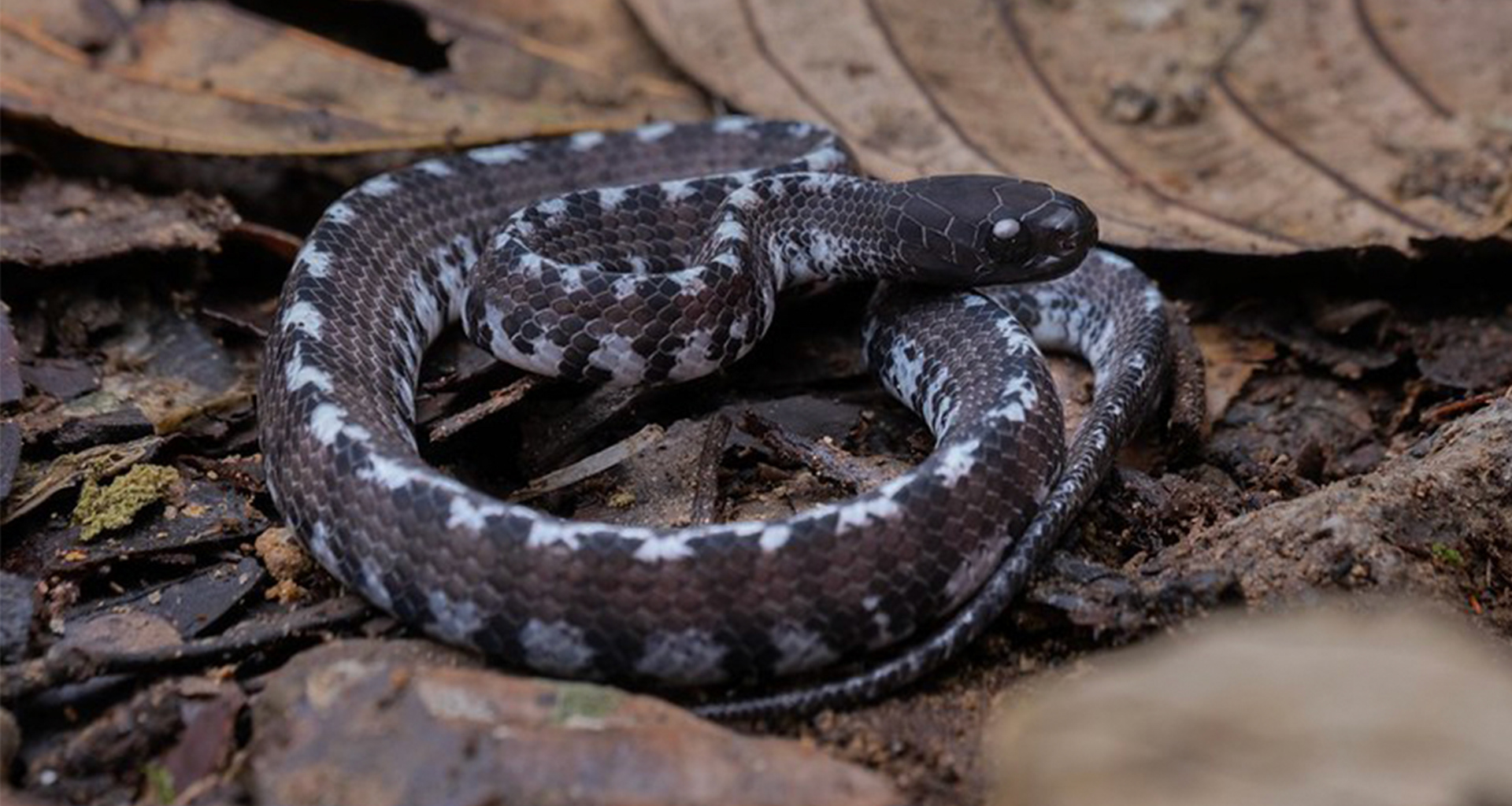
Jamil's slug snake (Asthenodipsas jamilnaisi)
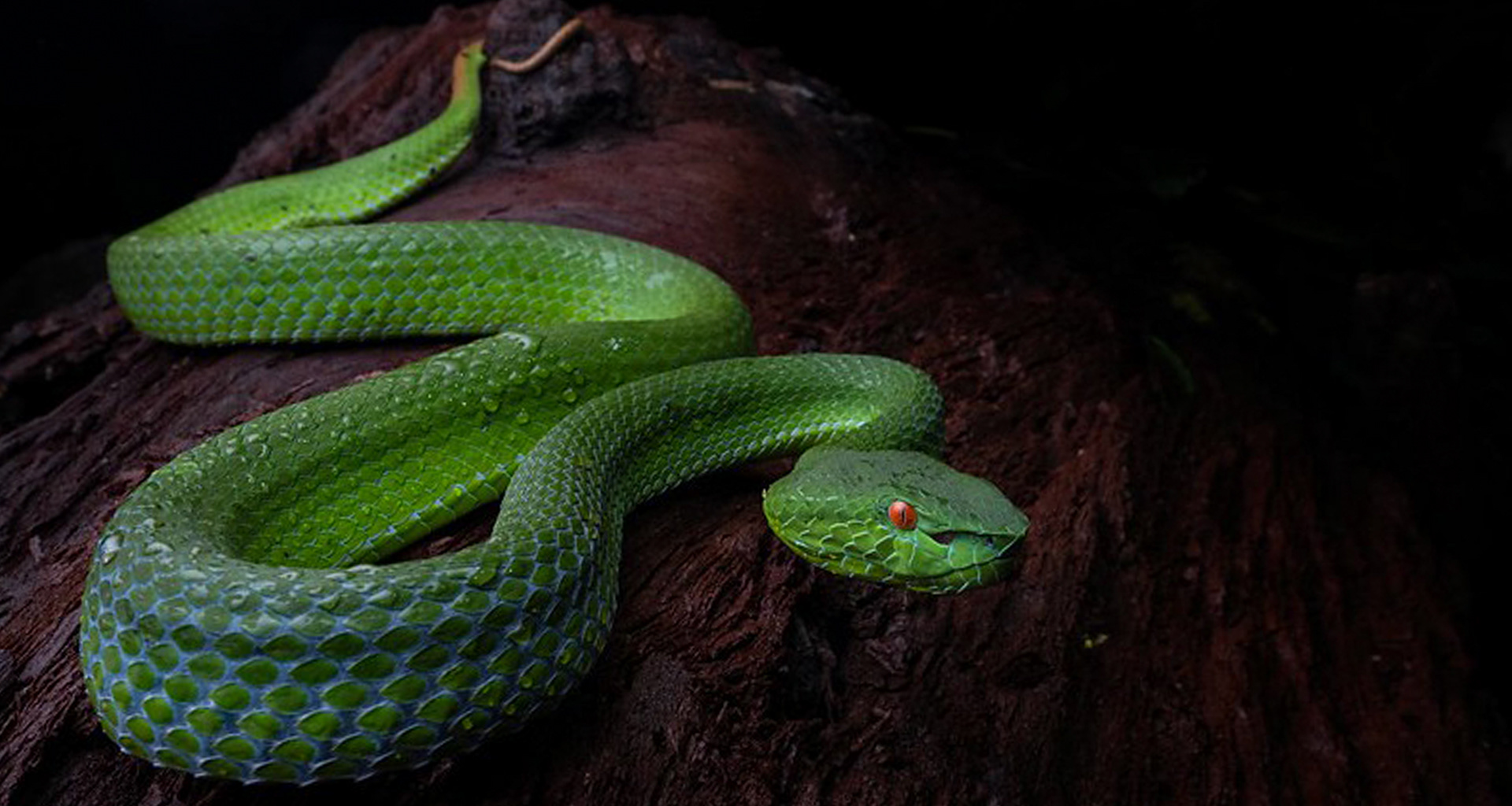
Sabah pit viper (Trimeresurus sabahi)
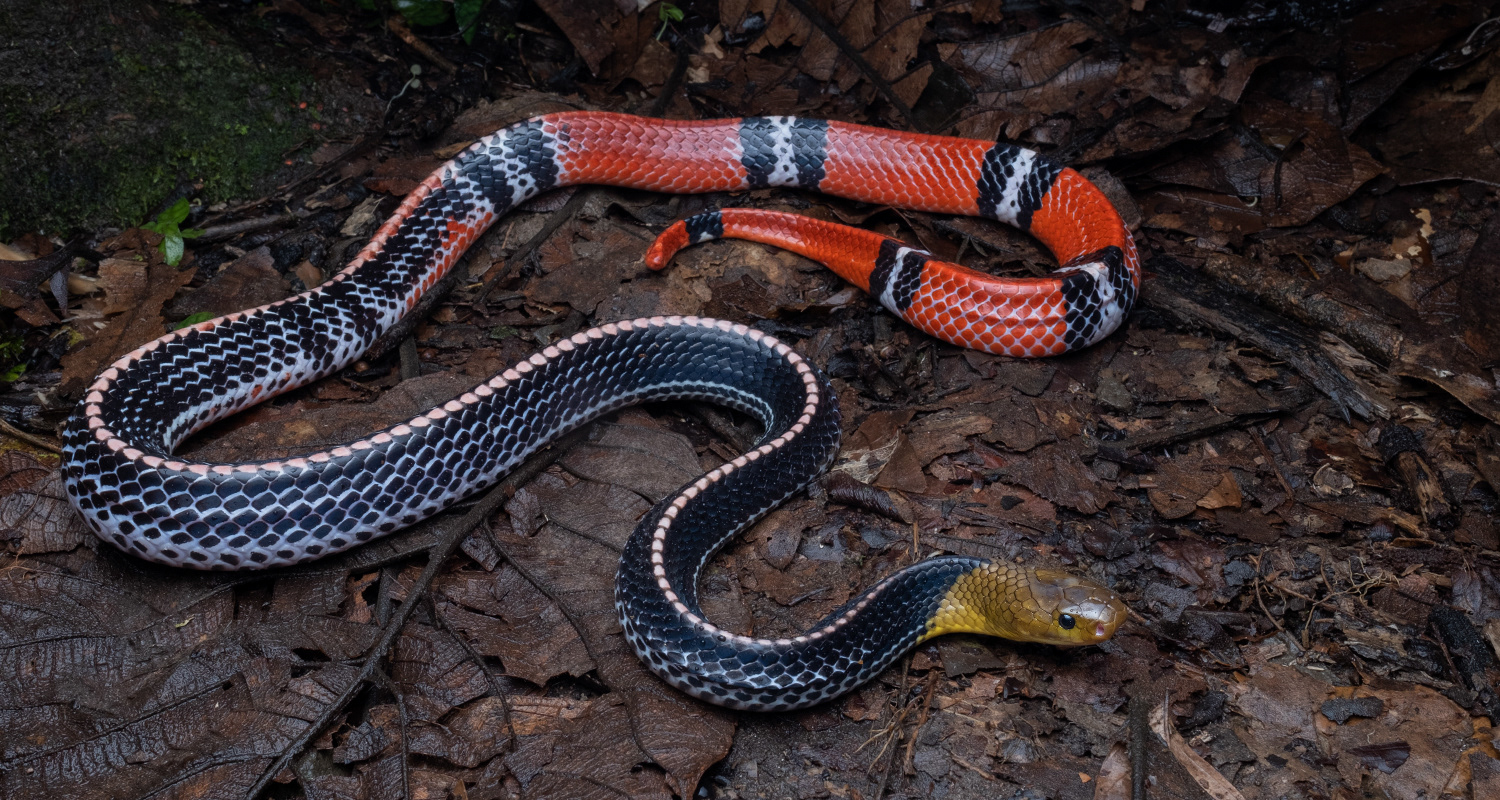
Kinabalu krait (Bungarus flaviceps baluensis).
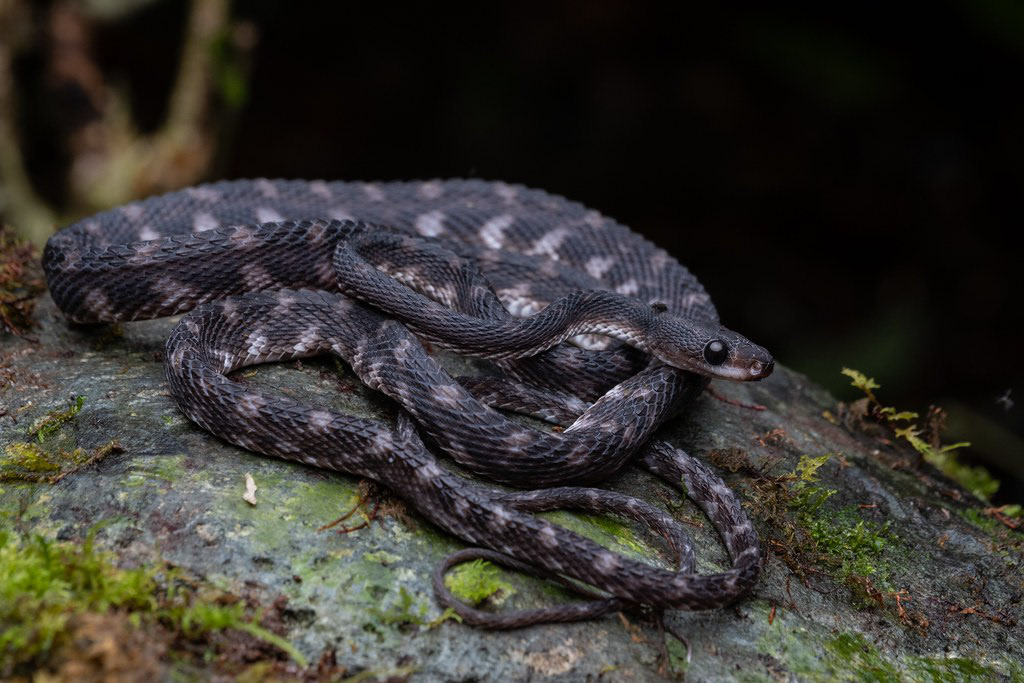
Stoliczka's stream snake (Paraxenodermus boreensis)
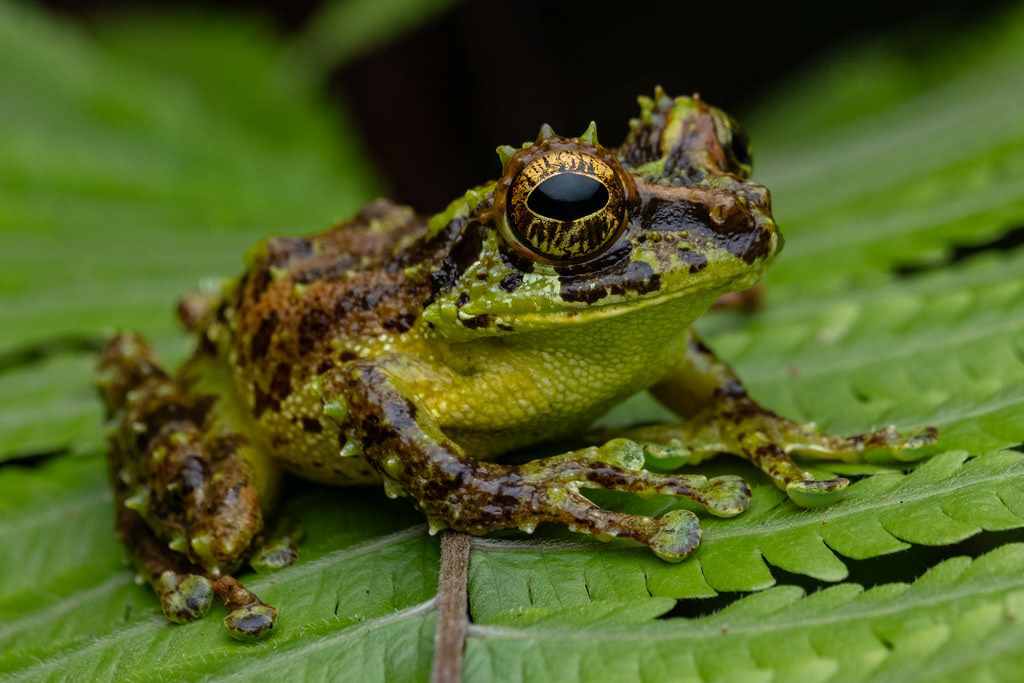
Mossy shrub frog (Philautus macroscelis)
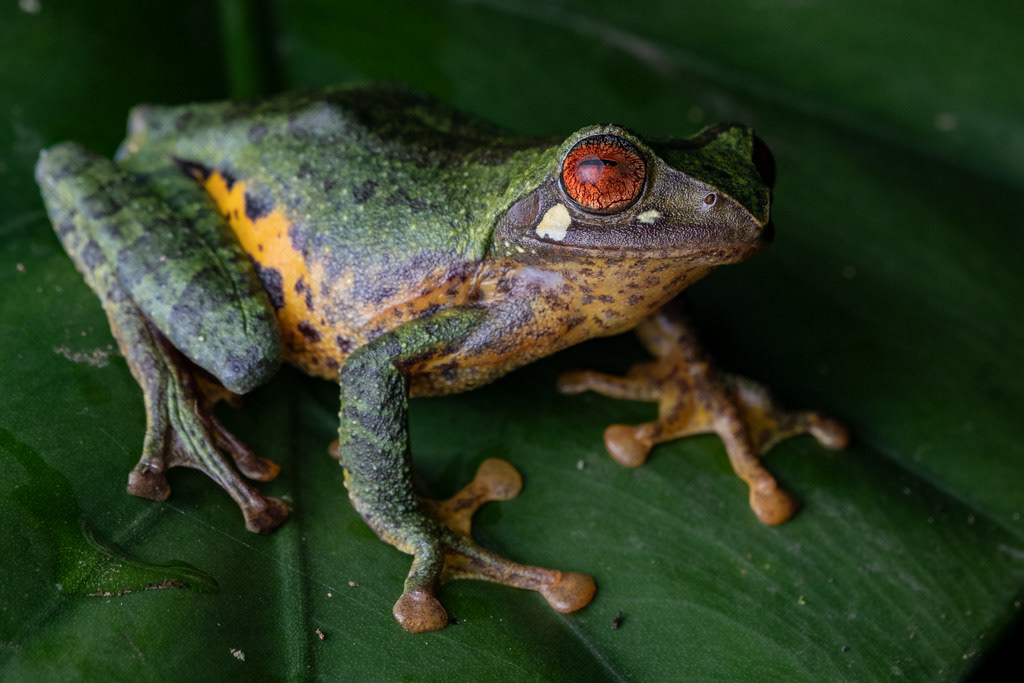
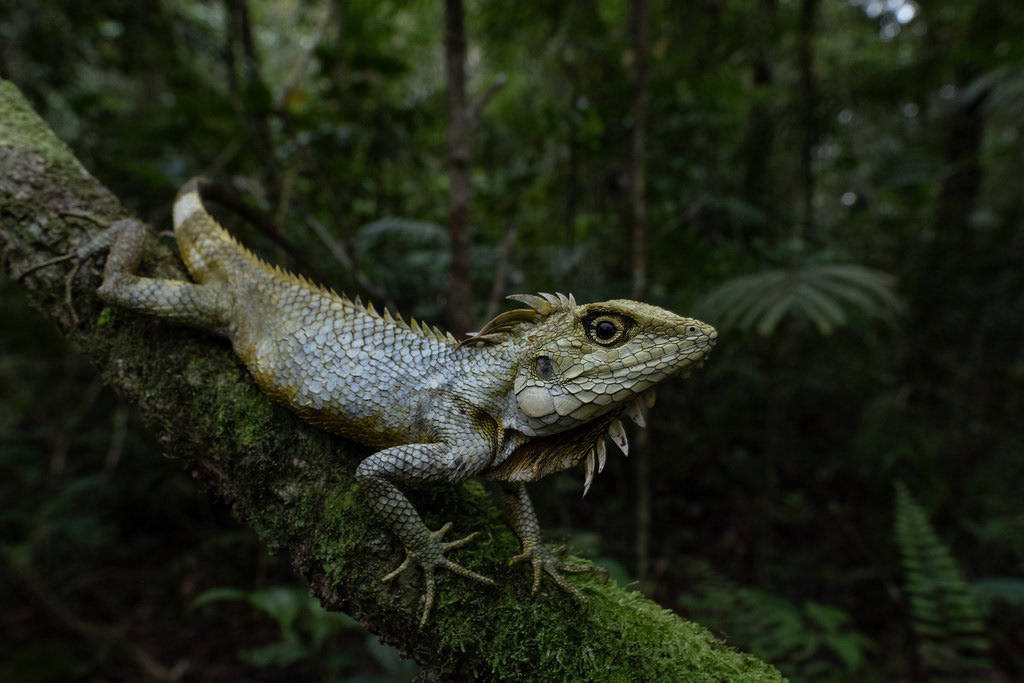
Kinabalu crested lizard (Hypsicalotes kinabaluensis)
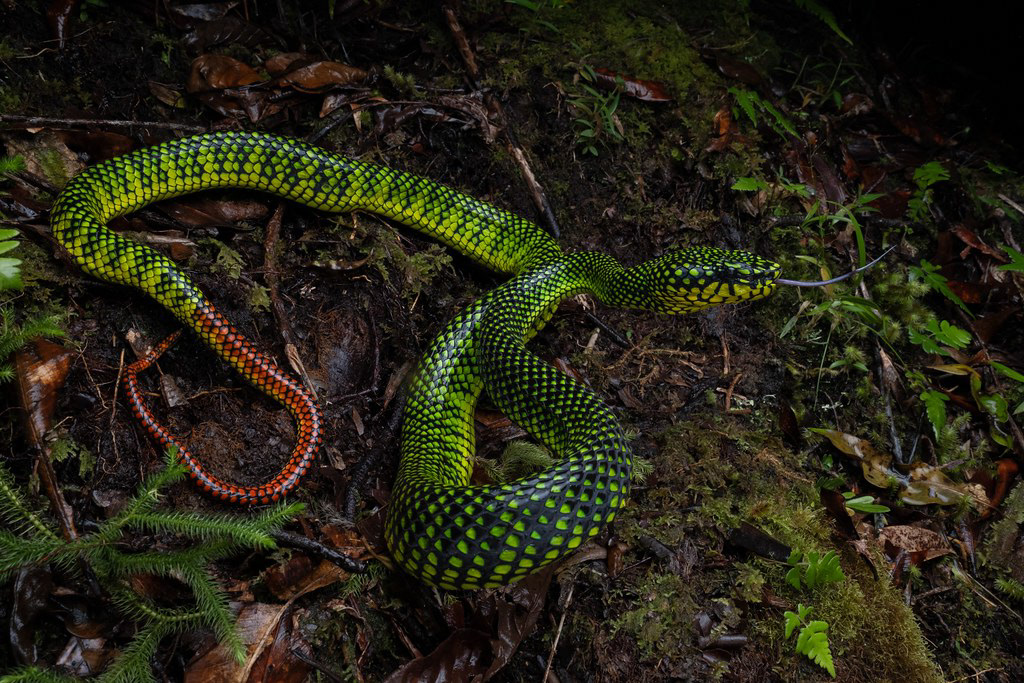
Malcolm's pit viper (Trimeresurus malcolmi)
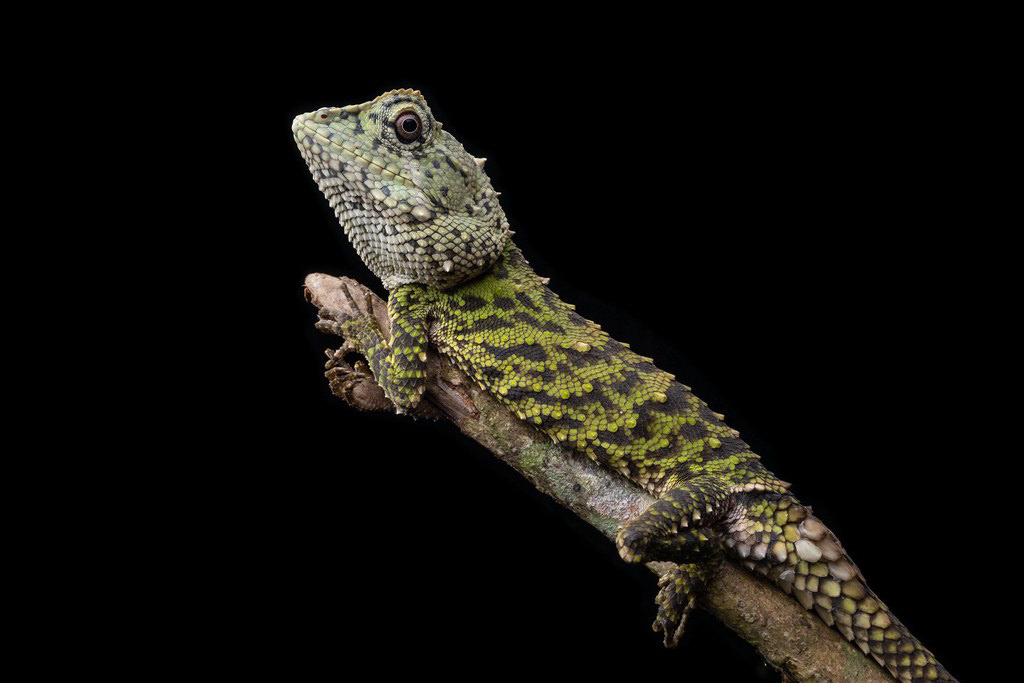
Moquard's eyebrow lizard (Pelturagonia cephalum)
Nights 1-4: Mount Kinabalu
The expedition begins with 4 nights in the highlands of Mount Kinabalu, home to some of the most remarkable herpetofauna of anywhere in South-East Asia. Most animals we can see here are endemic to the highlands of Borneo and this specific mountain range. The holy grail of the highlands is undoubtedly the magnificent Malcolm's pit viper (Trimeresurus malcomi), which can grow to incredibly impressive sizes and occurs high up the slopes of Mount Kinabalu. It is rare, but 4 nights of intense searching will give us a good chance to encounter what is arguably the best pit viper in tropical Asia.
As November is the rainy season, we can encounter the highly-cryptic Chasen’s mountain pit viper (Garthius chaseni) after heavy rains, while the Sabah pit viper (Trimeresurus sabahi) is abundant regardless of weather and can also grow to large sizes like T. malcolmi. Both the black-striped coral snake (Calliophis nigrotaeniatus) and world-famous Kinabalu krait (Bungarus flaviceps baluensis) inhabit these highlands, feeding primarily on smaller snakes. While high numbers of snakes are typically hard to find here, the diversity on the mountain is high and we will get out in the daytime to target diurnal species and spend every night trying our hardest to see as much as possible.
In between snake encounters, one will remain fascinated by the frogs and lizards which inhabit the area. The giant Kobyashi's horned frog (Pelobatrachus kobyashii) is a must see for anyone visiting the area, while the hilariously proportion broad-headed fanged frog (Limnonectes kong) is also an enjoyable encounter. There are also many beautiful tree frogs in the area, most notably the Kinabalu green bush frog (Philautus bunitus), mossy bush frog (Philautus macroscelis) and the very rare Kinabalu flying frog (Rhacophorus baluensis). The Kinabalu crested lizard (Hypsicalotes kinabaluensis) is our personal favourite lizard here, albeit very rare, while the more commonly-seen Kinabalu gliding gecko (Gekko rhacophorus) is another highlight. Beyond this, several interesting geckos, agamid lizards and skinks show up on our forest walks.
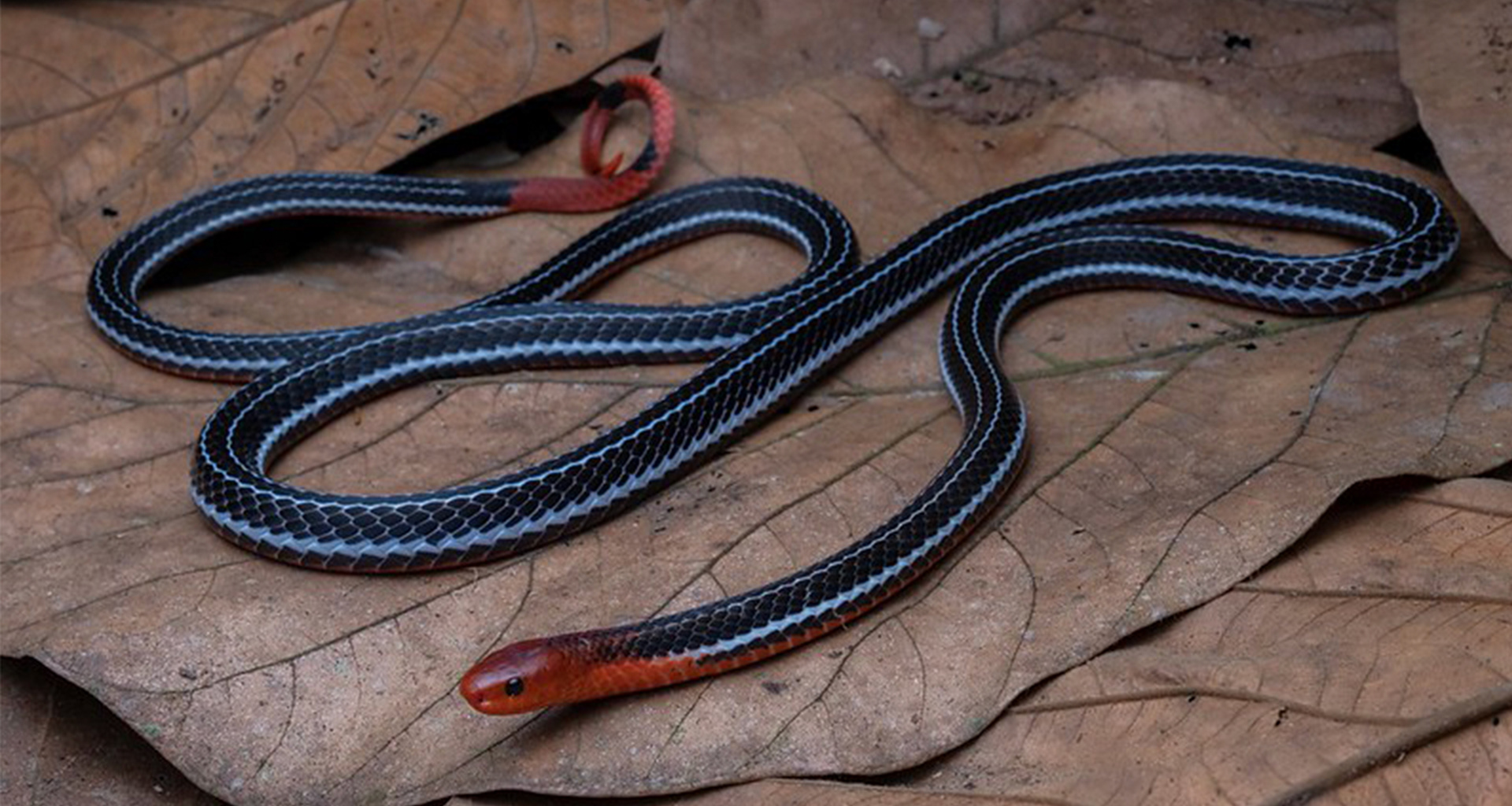
Bornean blue coral snake (Calliophis bivirgata tetrataenia)
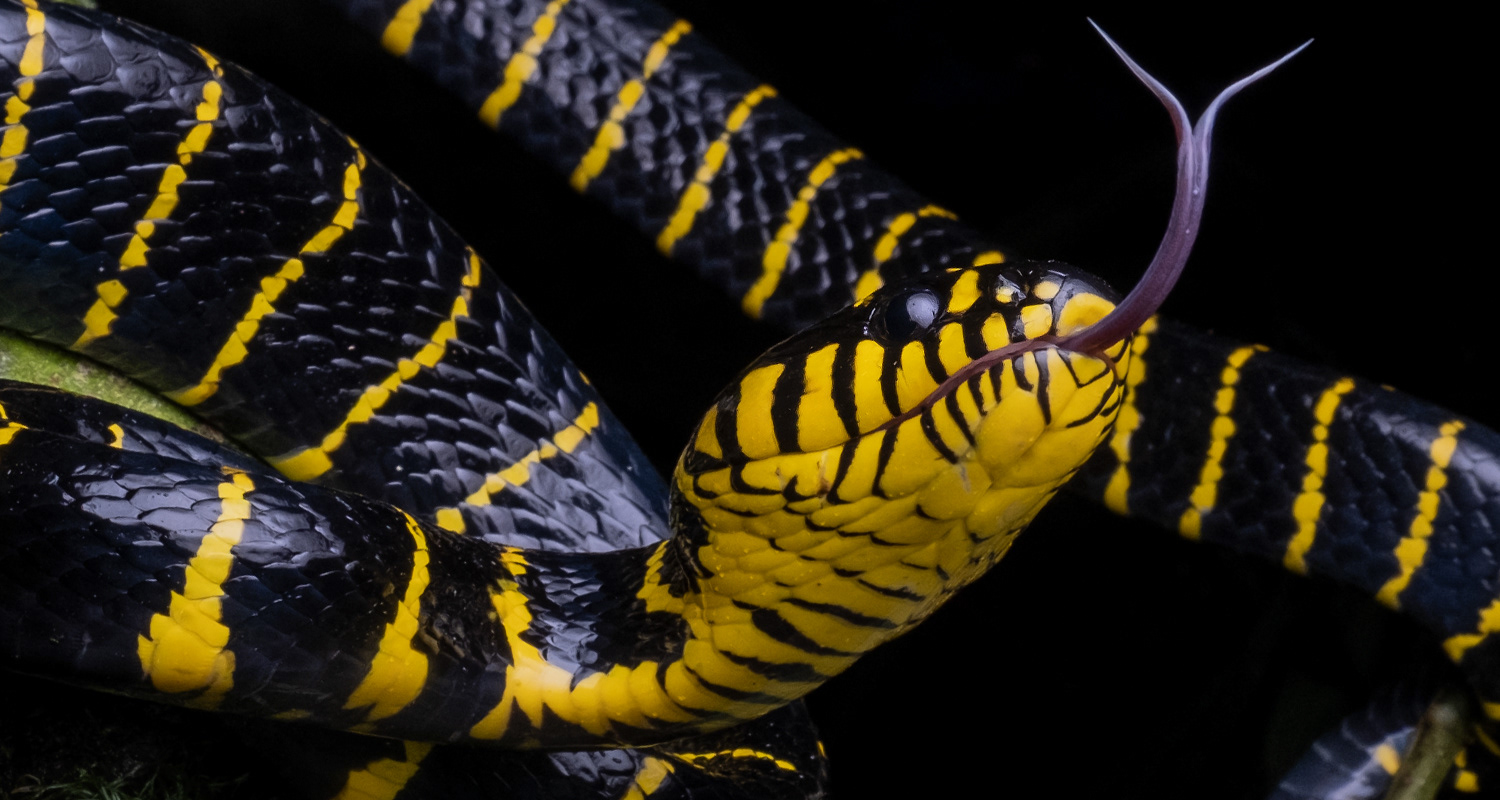
Many-banded mangrove cat snake (Boiga dendrophila annectens).
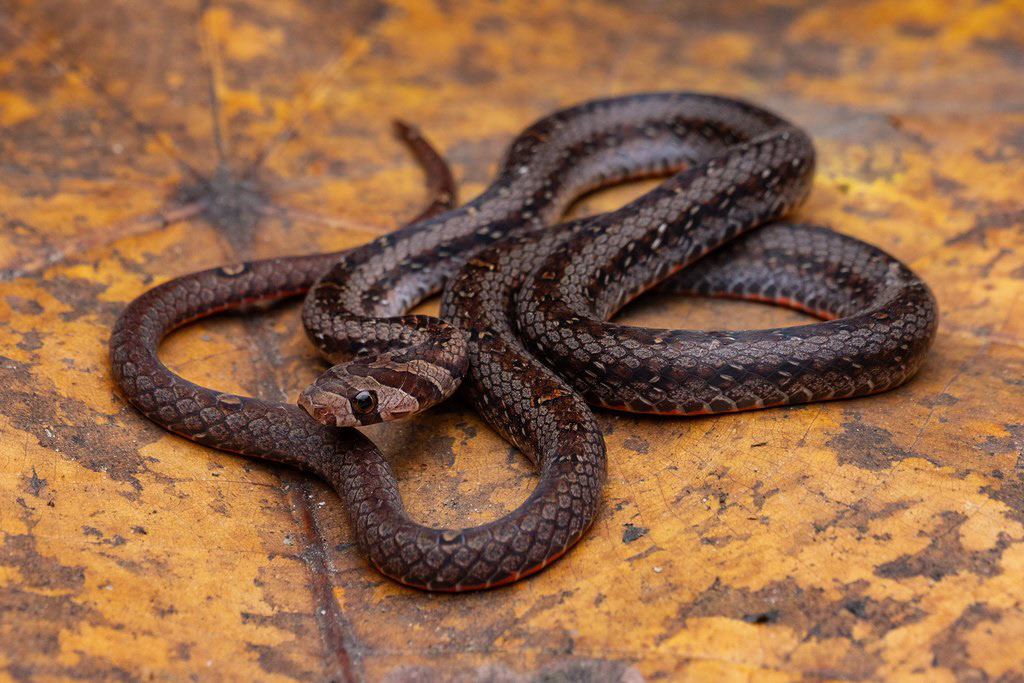
Everett's kukri snake (Oligodon everetti)
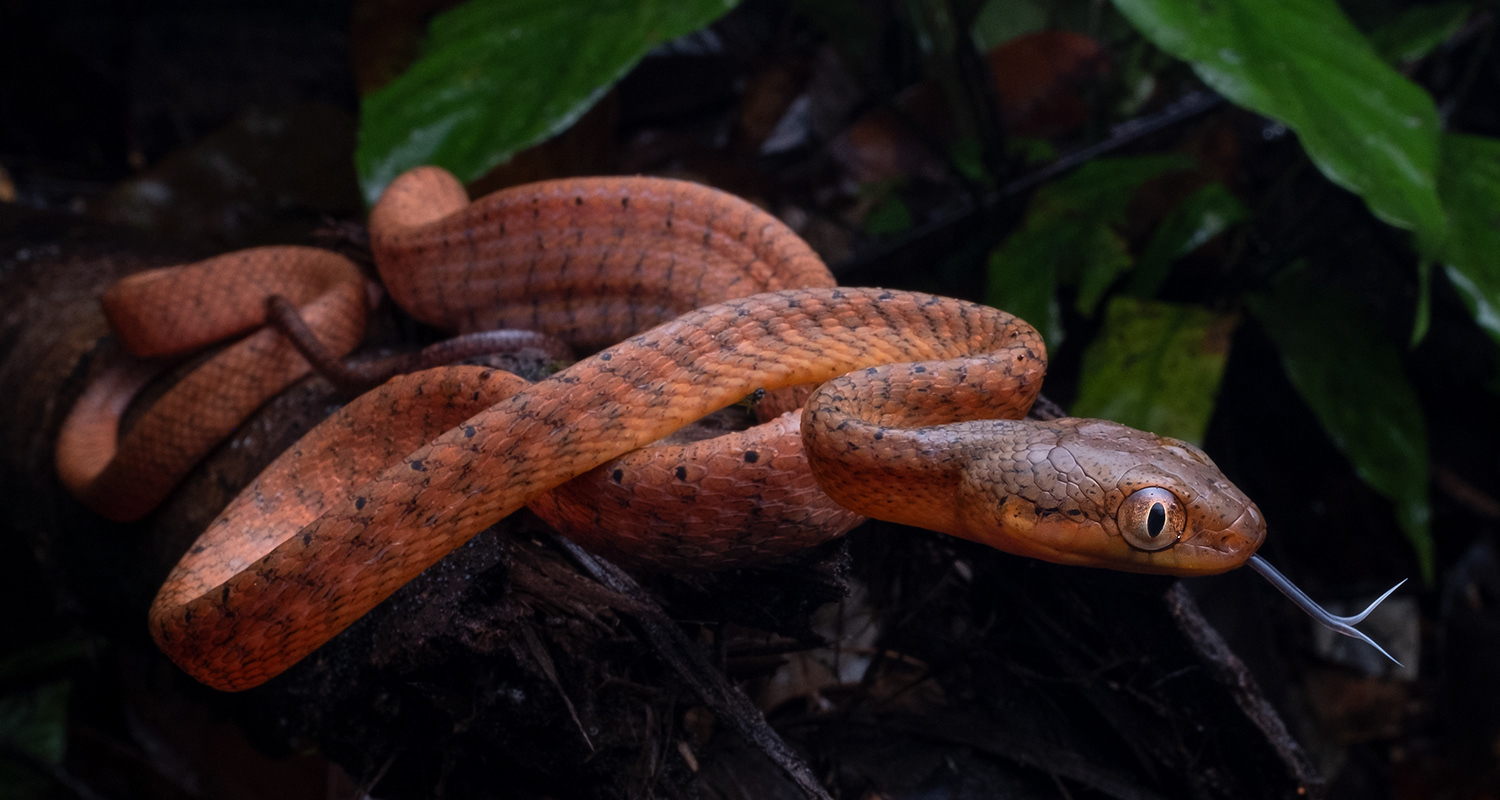
Dark-headed cat snake (Boiga nigriceps).
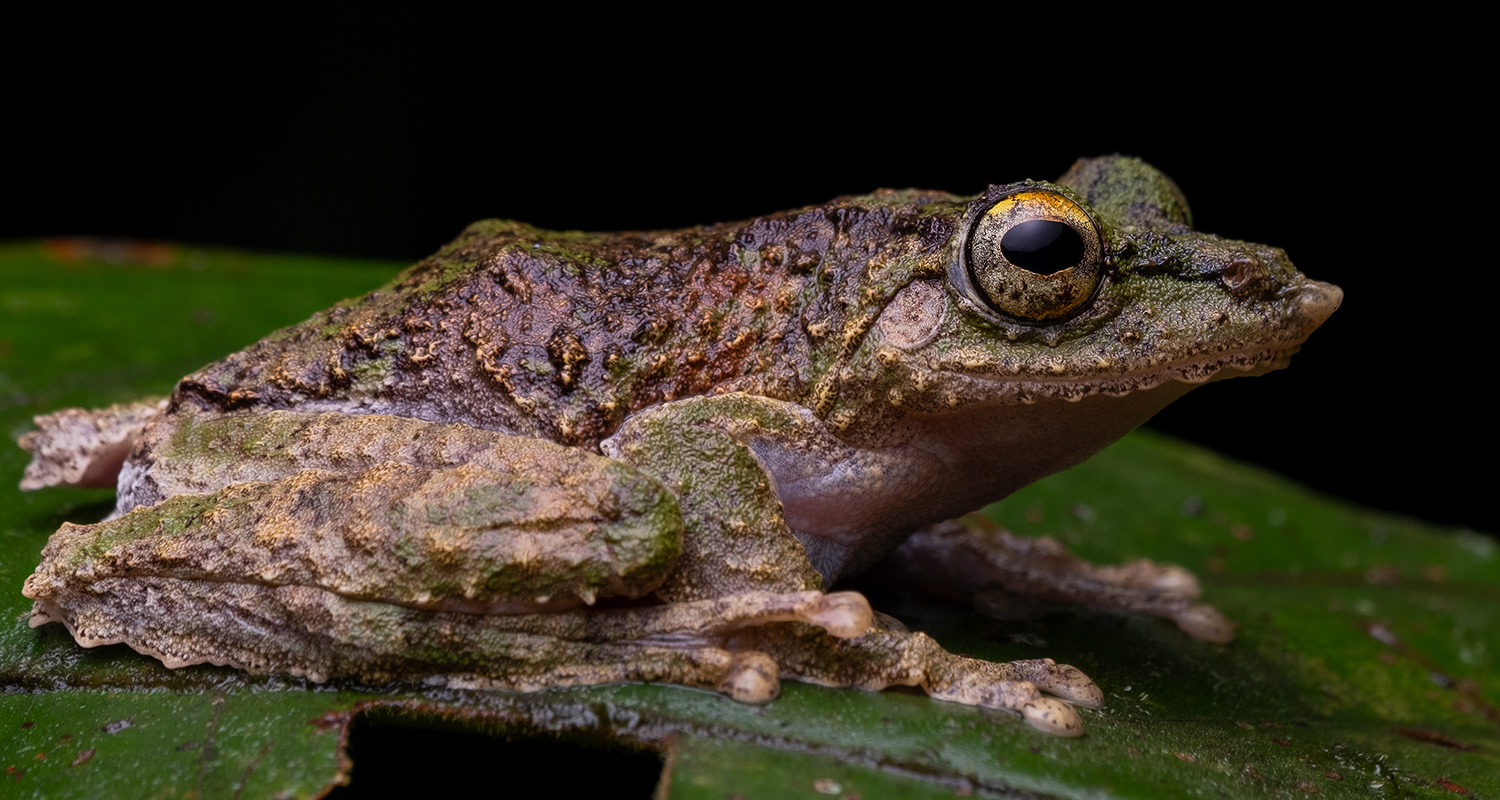
Frilled tree frog (Kurixalus appendiculatus).
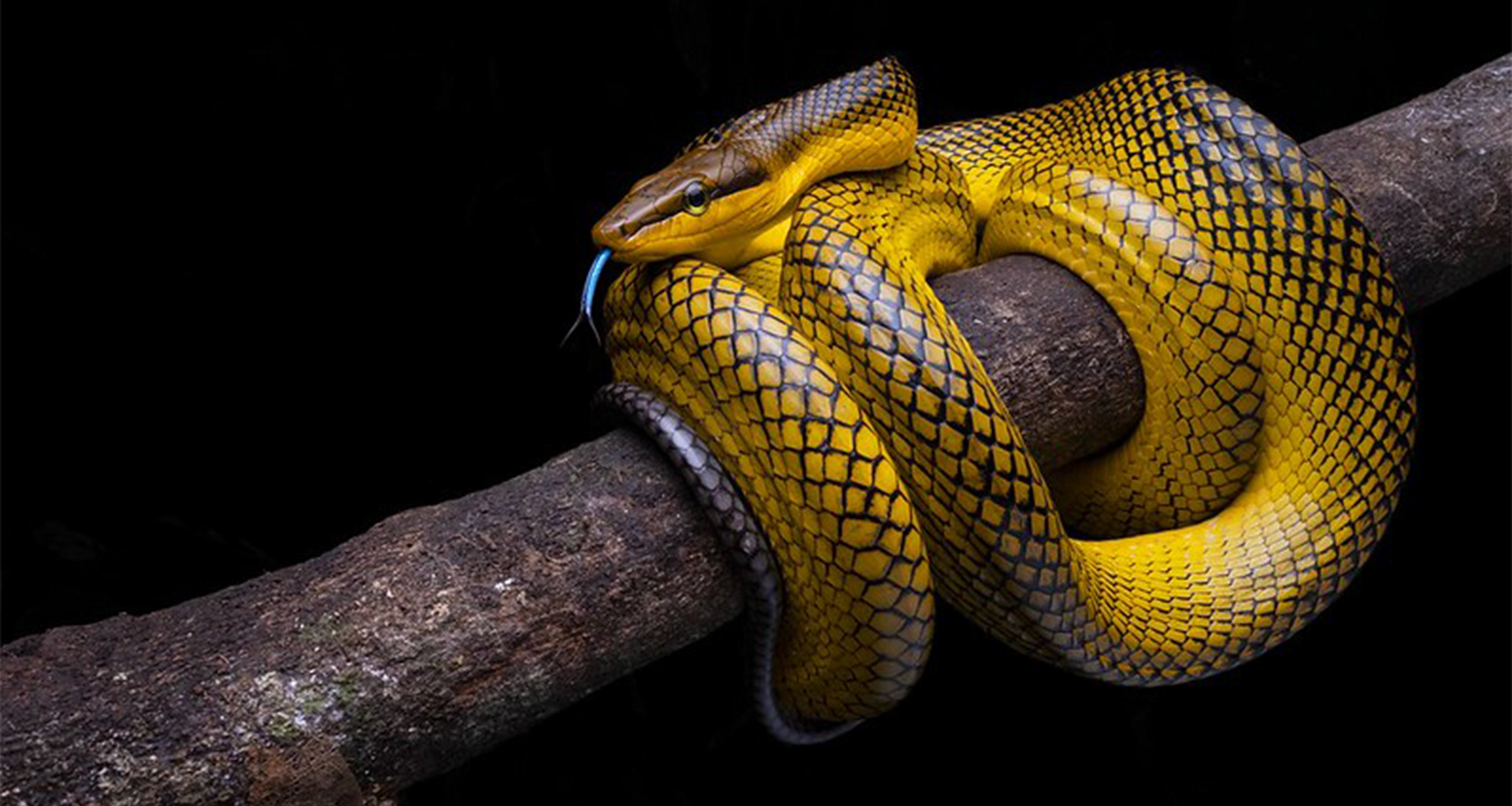
Red-tailed racer (Gonyosoma oxycephalum)
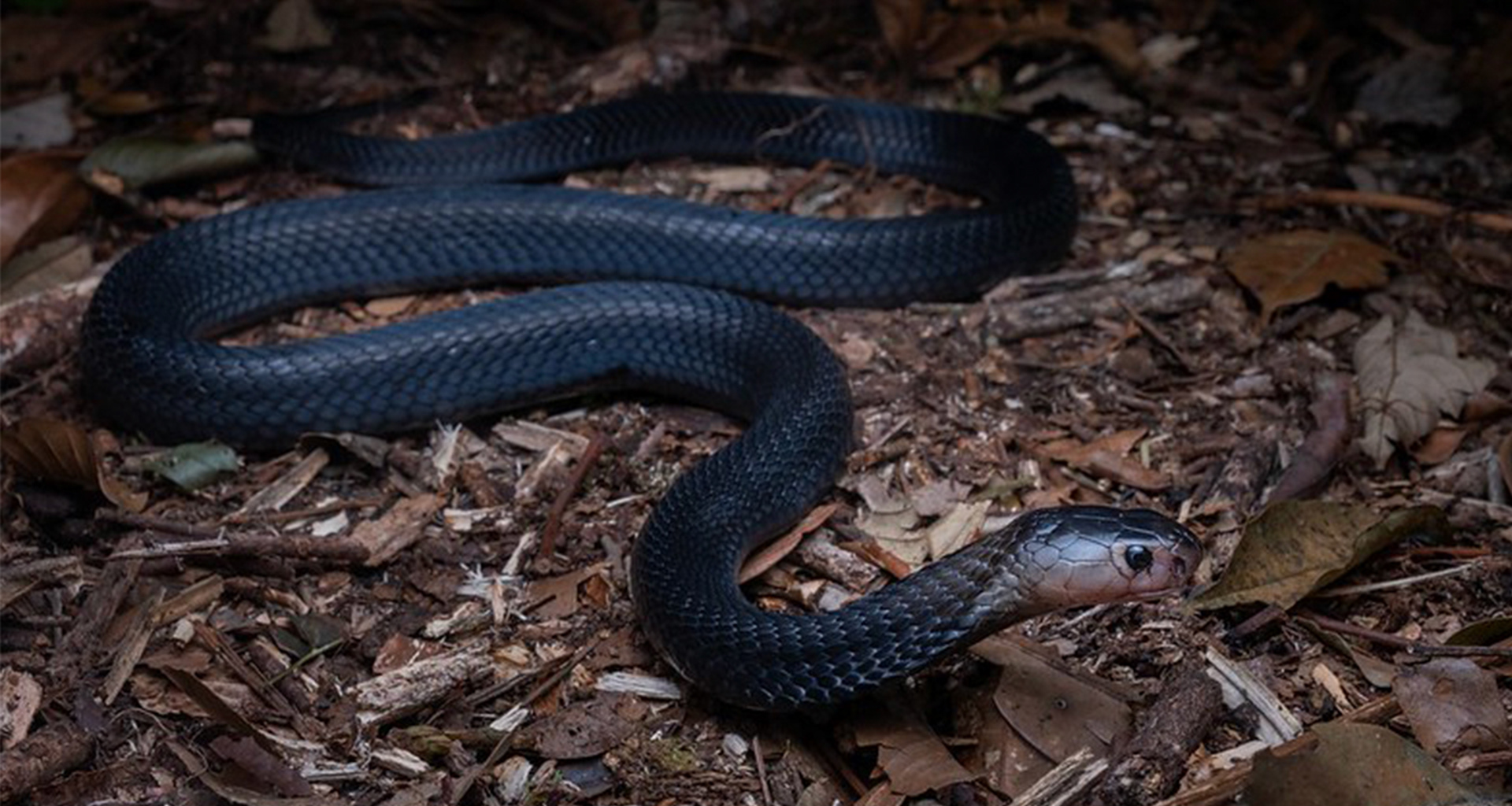
Sumatran cobra (Naja sumatrana)
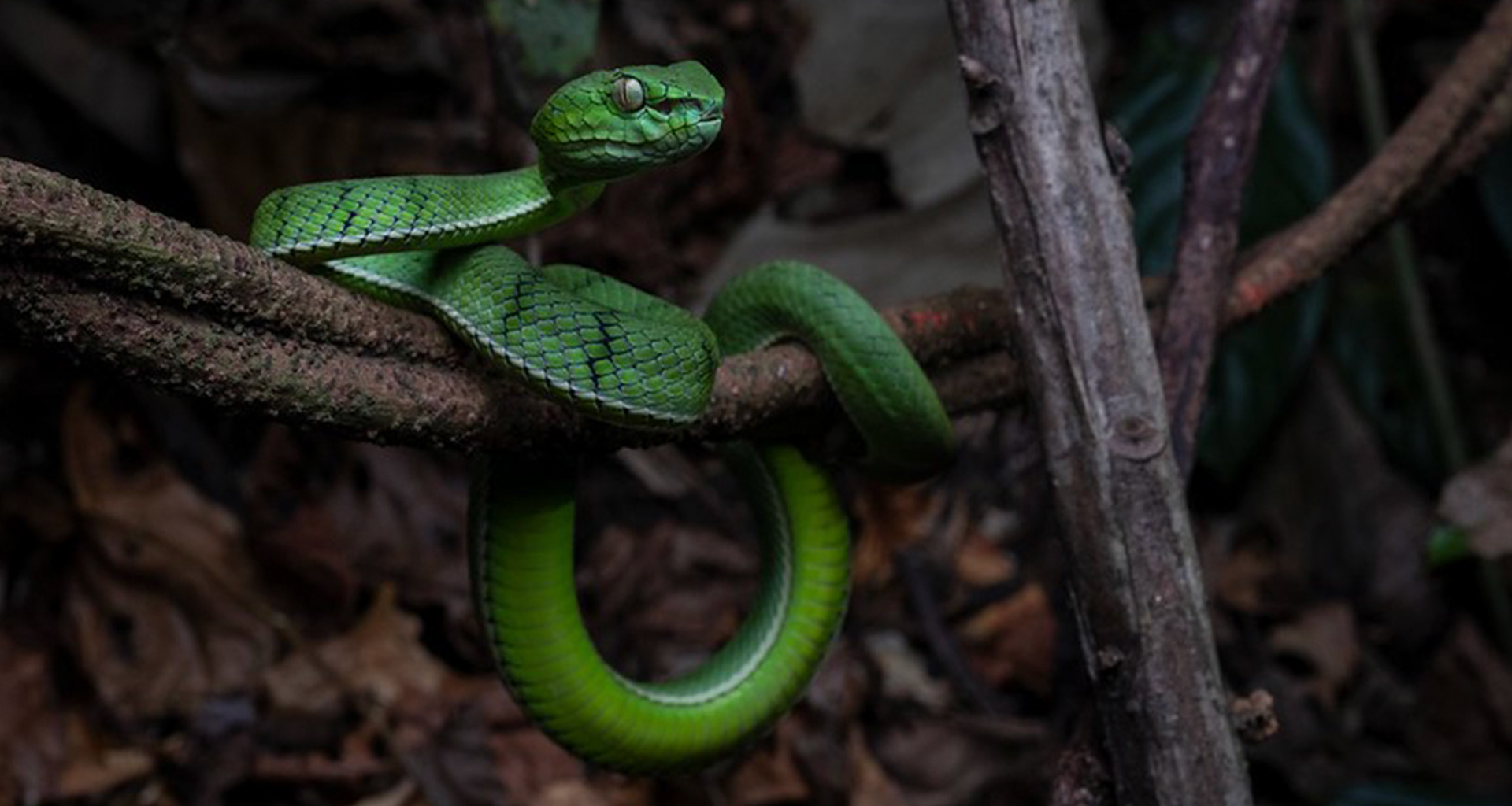
Sumatran pit viper (Trimeresurus sumatranus).
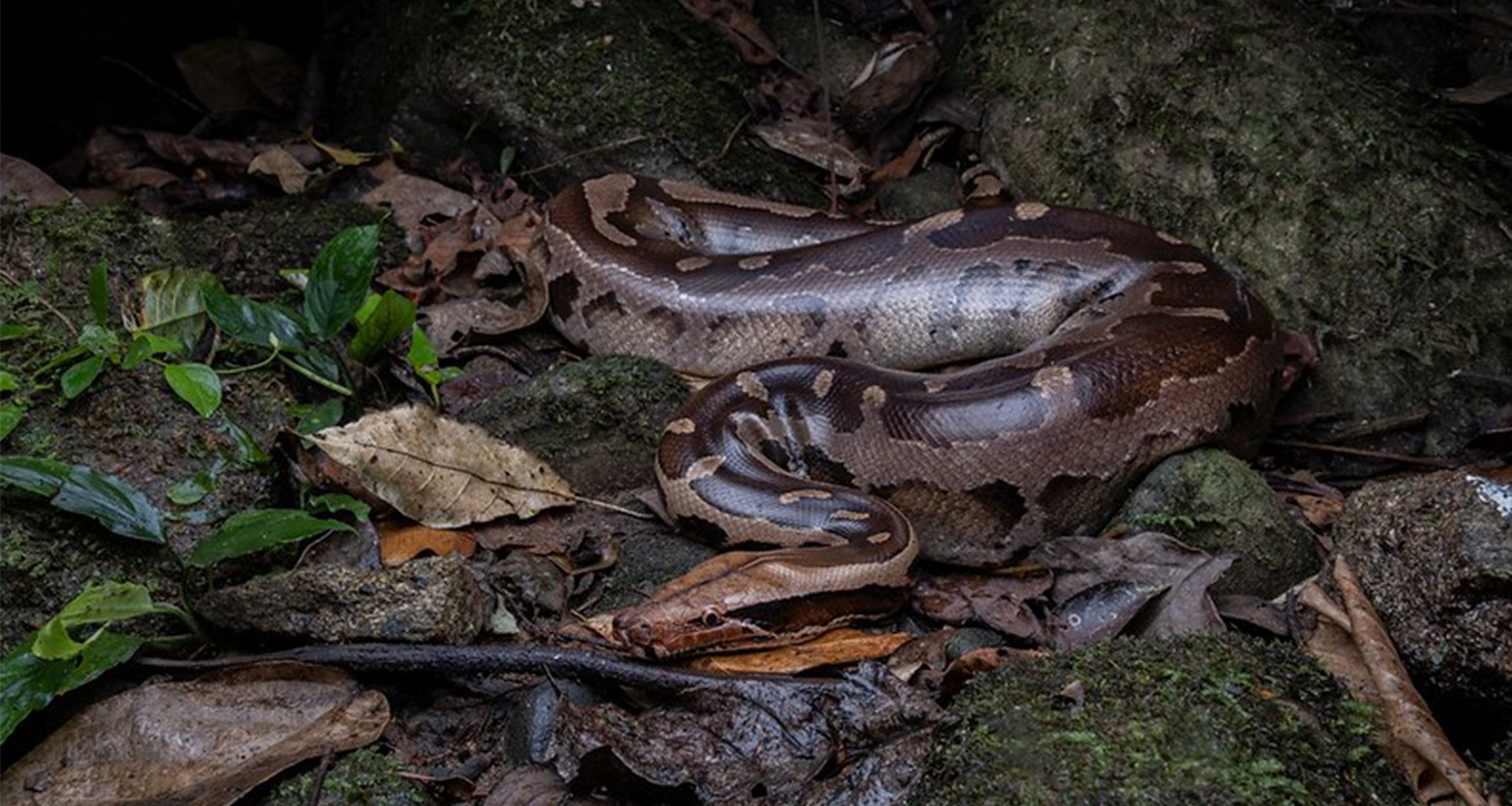
Bornean short-tailed python (Python breitensteini)
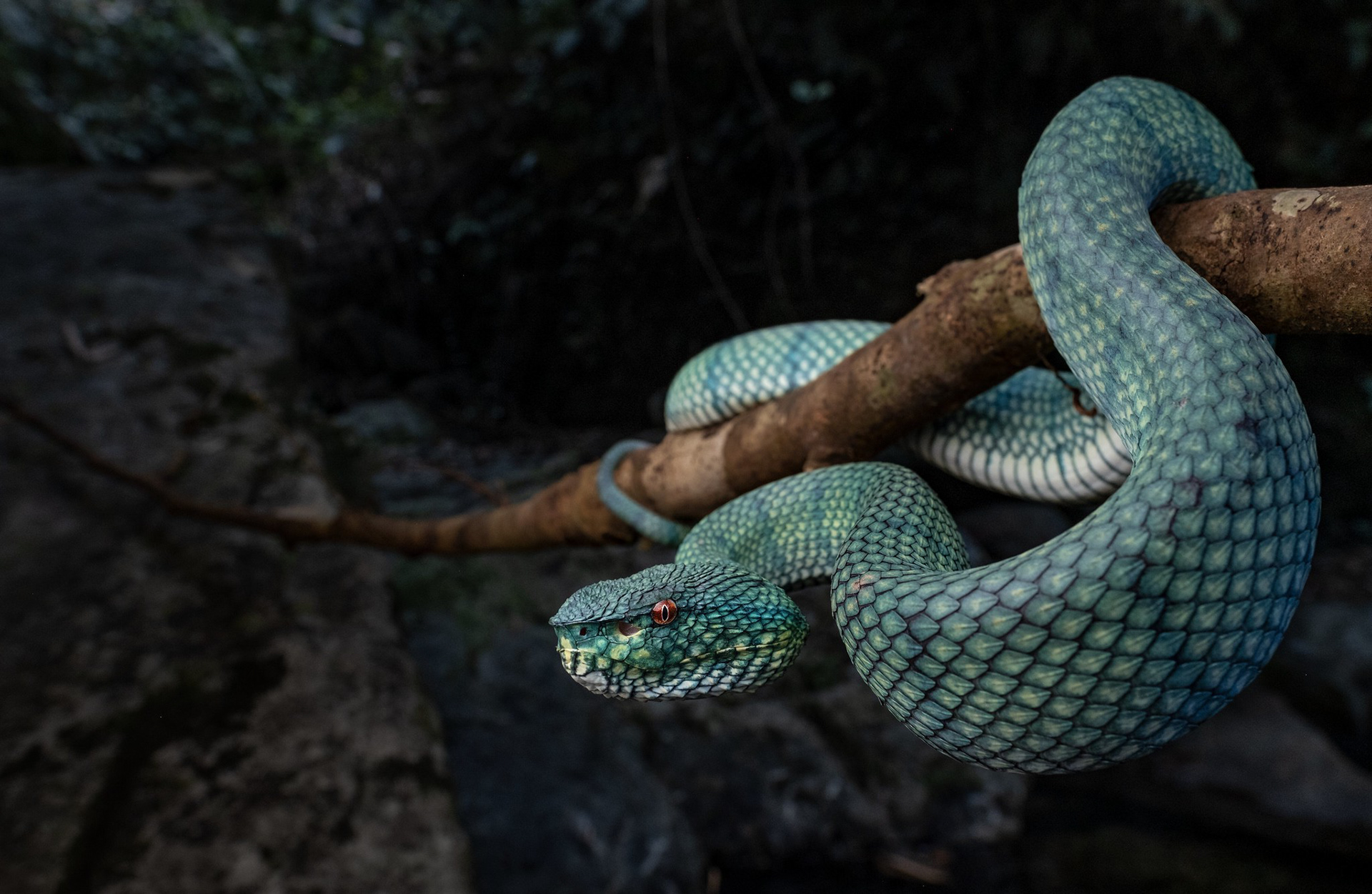
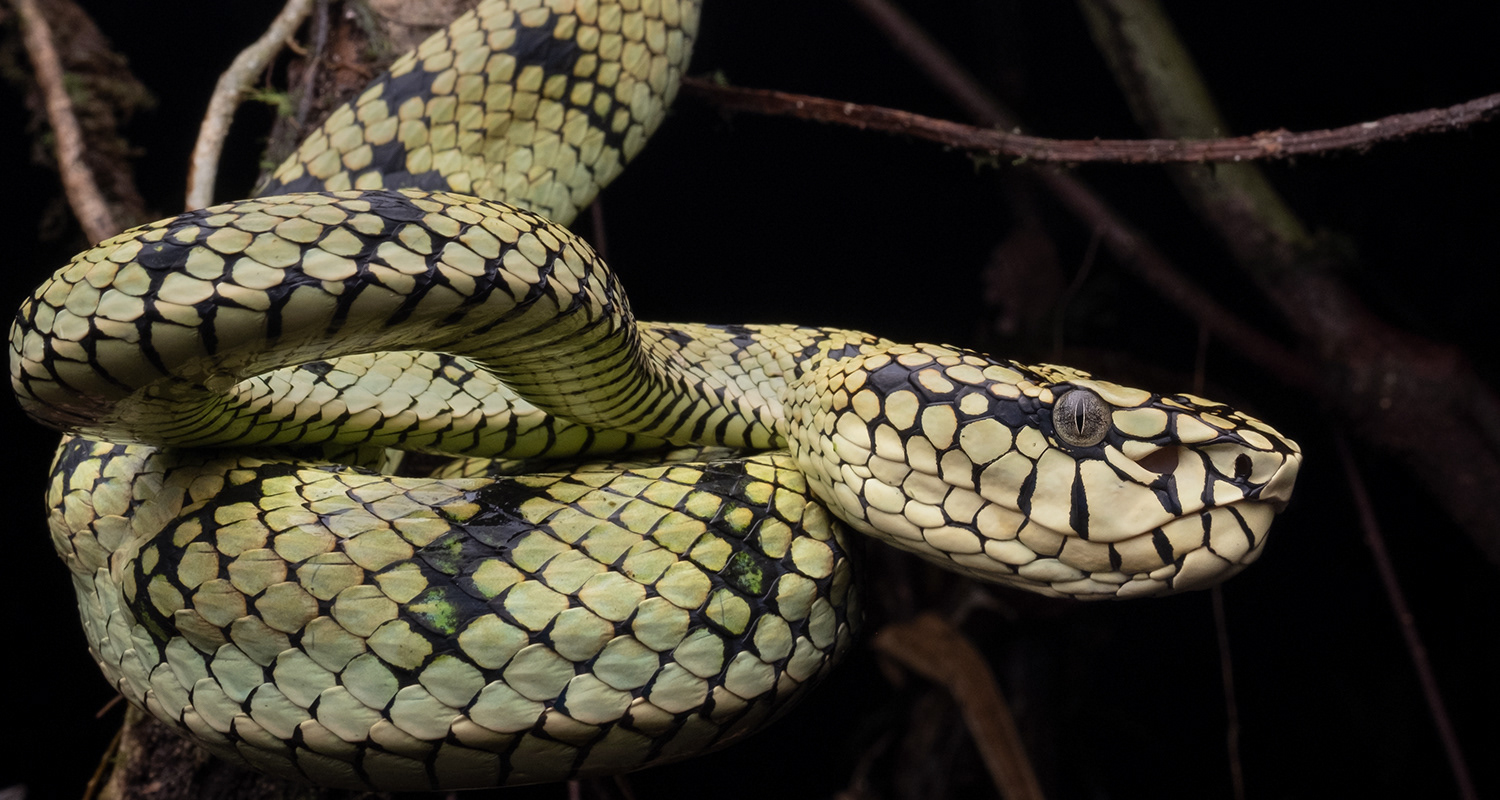
Sumatran pit viper (Trimeresurus sumatranus).
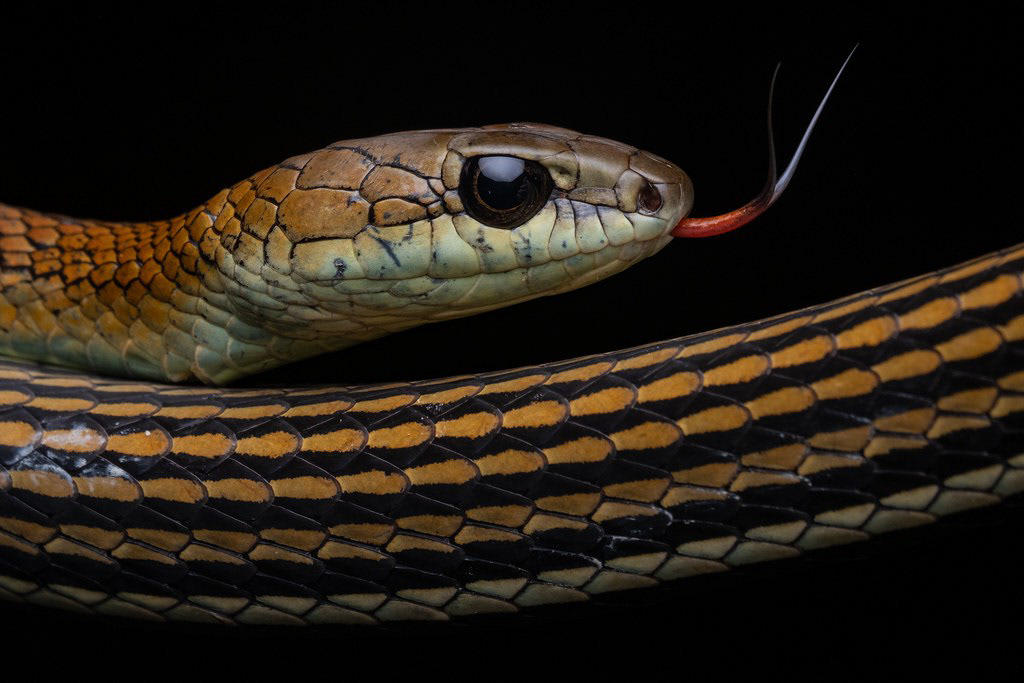
Striped bronzeback (Dendrelaphis caudolineatus)
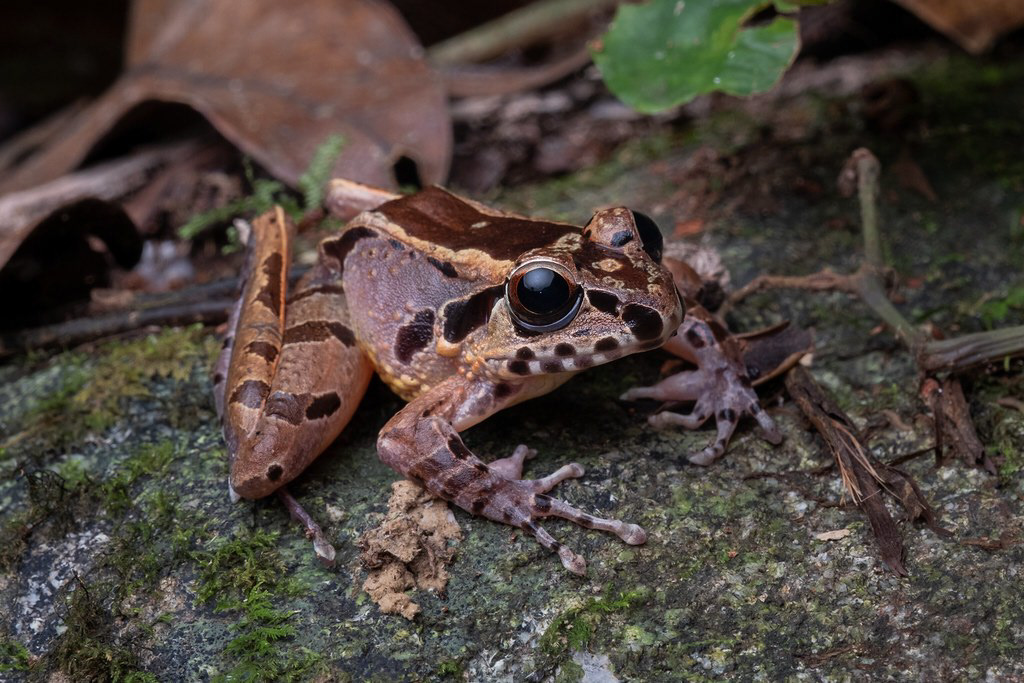
Hole-in-the-head frog (Huia cavitympanum)
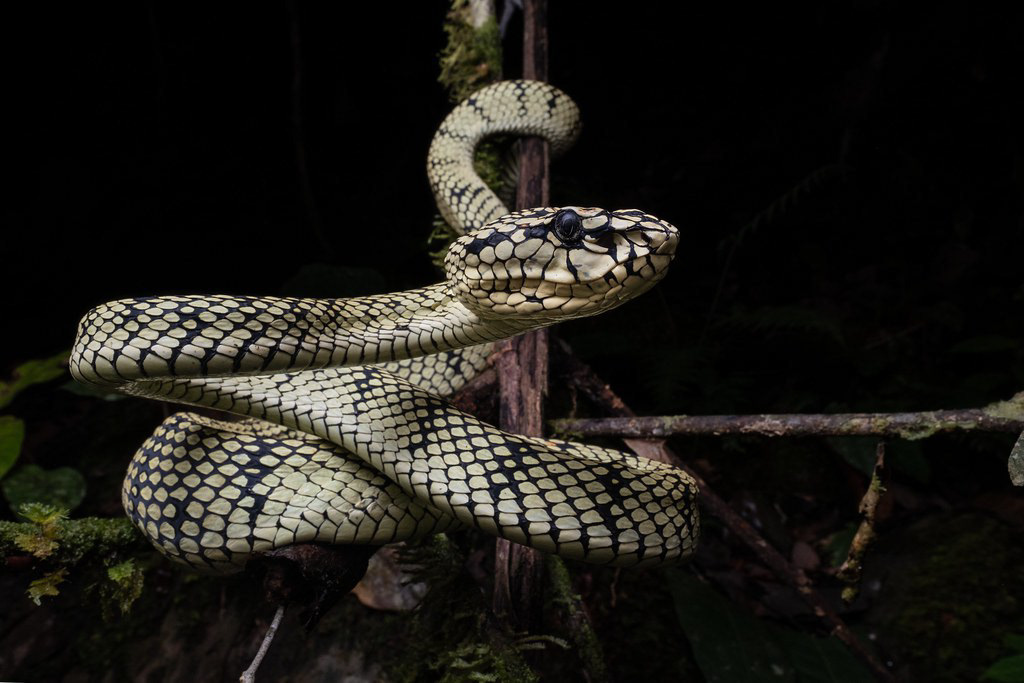
Sumatran pit viper (Trimeresurus sumatranus)
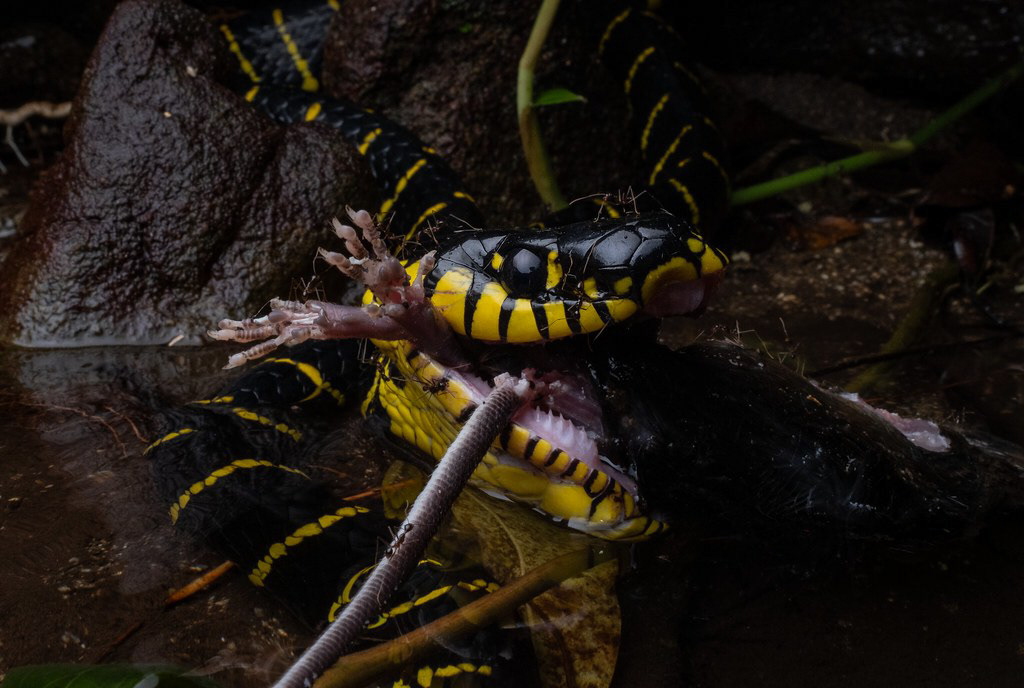
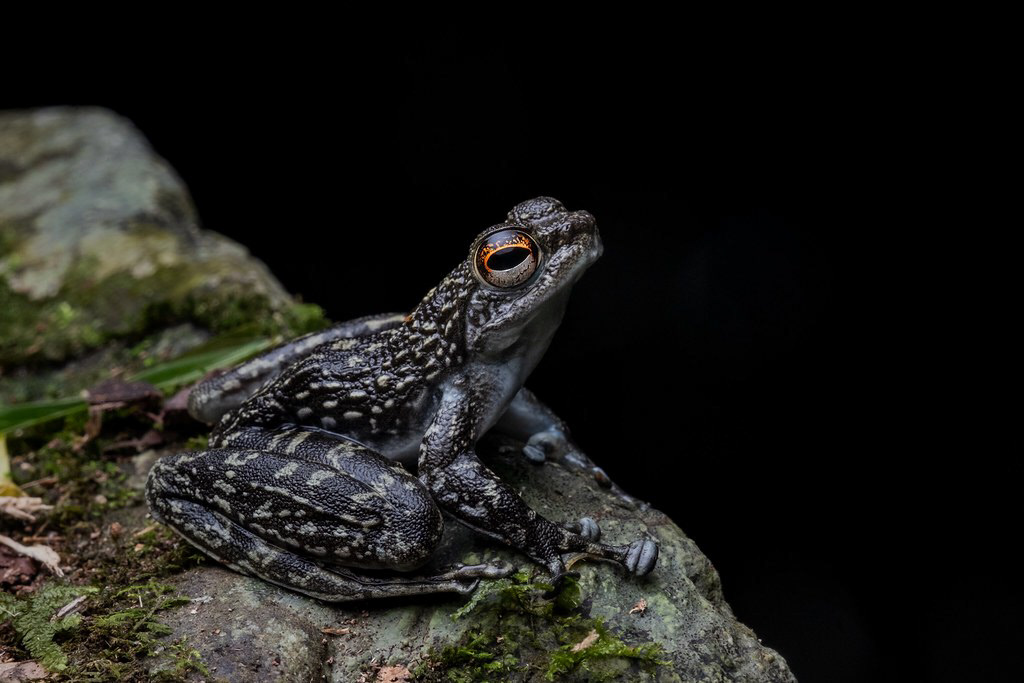
Black rock skipper (Staurois latopalmatus)
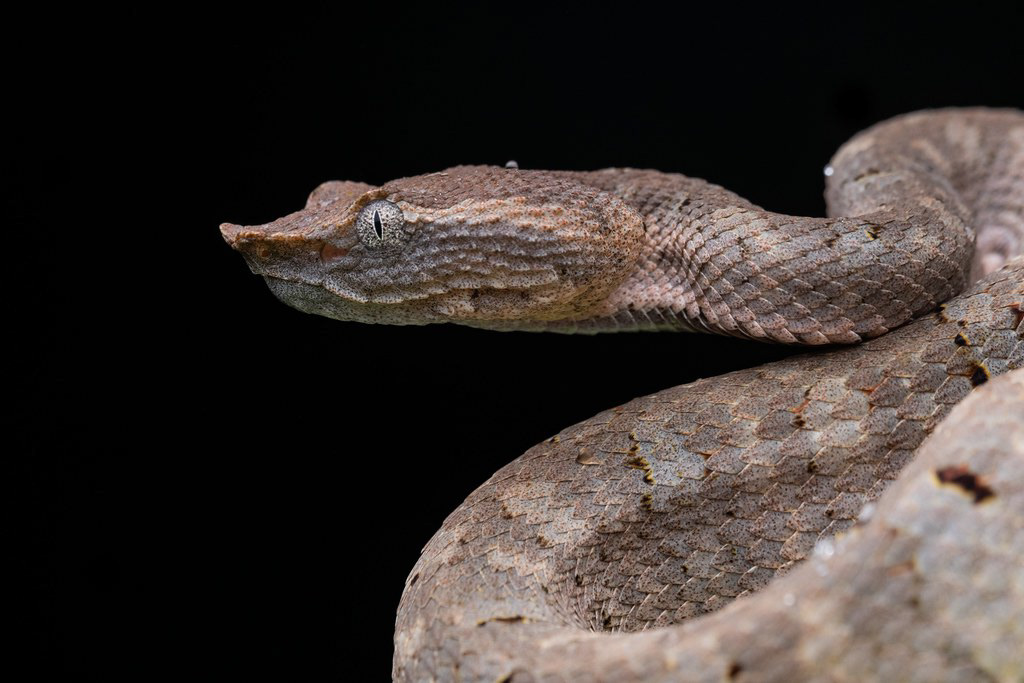
Bornean leaf-nosed pit viper (Craspedocephalus borneensis)

Bornean keeled pit viper (Tropidolaemus subannulatus)
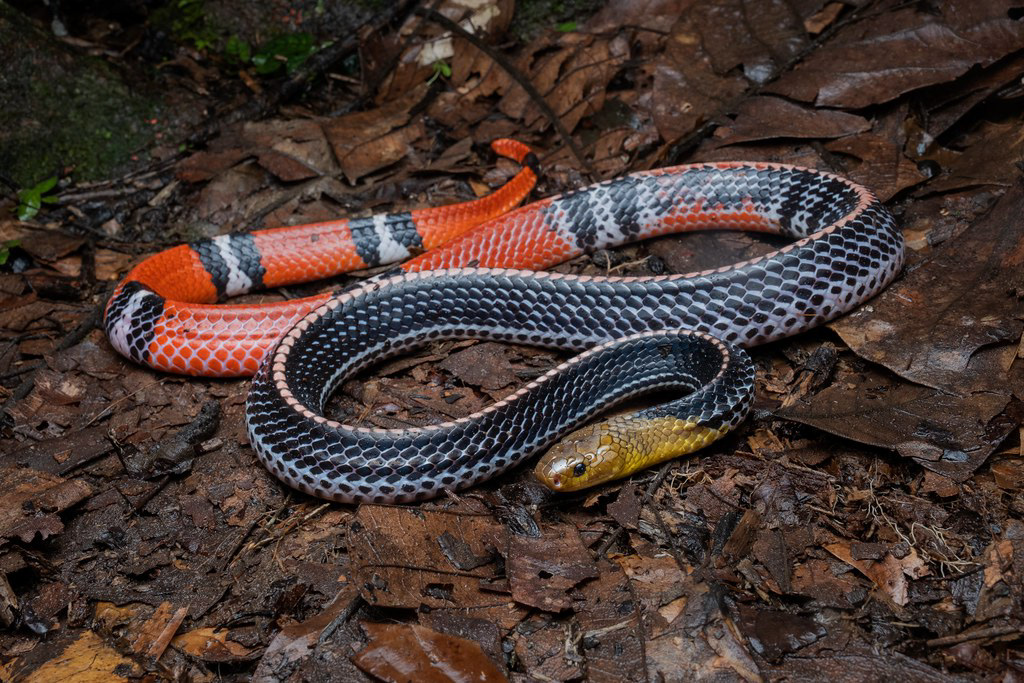
Kinabalu krait (Bungarus f. baluensis)
Nights 5-8: Ranau
The final 4 nights of the expedition will be spent near Ranau, at a highly productive mid-hill forest site situated roughly 500 meters above sea level. The forest at this elevation is rich, tropical dipterocarp rainforest, and we will have access to both forest edges and primary rainforest valleys with giant trees. One of the ultimate showstoppers occurring this area is the Sumatran pit viper (Trimeresurus sumatranus). However, there are many more sensational species occurring here and we cannot possibly list them all. A few of the highlights which we target on every trip are the Bornean leaf-nosed pit viper (Craspedocephalus borneensis) and Bornean keeled pit-viper (Tropidolaemus subannulatus), the Kinabalu krait (Bungarus baluensis), yellow-morph red-tailed racer (Gonyosoma oxycephalum), Bornean short-tailed python (Python breitensteini) and Bornean blue coral snake (Calliophis bivirgata tetrataenia). We have also encountered Sumatran cobra (Naja sumatrana) while driving on the roads at night. The number of colubrids here is almost endless belief, and we can be sure to encounter multiple new species of snake every single night.
There are several impressive Gonocephalus sp. lizards occurring in the lowlands, most notably the Bornean angle-headed lizard (Gonocephalus borneensis) - adult males boasting an unreal crest of horns. The cat gecko (Aeluroscalabotes felinus) and Peter’s bent-toed gecko (Cyrtodactylus consobrinus) are two fantastic gecko species which are both common here. We can search for the incredible Everett’s tree toad (Rentapia everetti) here, while heavy rain can bring out the iconic Wallace’s flying frog (Rhacophorus nigropalmatus) and endemic charming tree frog (Feihyla kajau). The long-nosed horned frog (Pelobatrachus nasuta) is also very common here.
Accommodation:
We will stay at comfortable hotels at each location, within walking distance of high-quality rainforests at Mount Kinabalu and Ranau. The standard package is two people per room, although we have the option to upgrade to a private room at each location. There is mobile service (4G) at all locations where we will be staying during this tour, as well as wifi in some areas of each hotel.
Food:
The majority of meals will be local dishes, but we will make several stops in more urban areas where one can also indulge in Indian and western cuisine. Every location will have access to local shops where one can stock up on snacks and drinks for the night of herping. All meals, drinks with meals and drinking water are included in the price, while personal drinks and snacks are not.
Environmental conditions & fitness:
The weather at our herping locations on Mount Kinabalu is very temperate, rarely exceeding 25 degrees during the day and dropping as low as 15 degrees at night. It can feel very cold when it rains. We highly recommend packing at least one sweater. At Ranau and Kota Kinabalu, it is extremely hot and humid during the day, cooling down significantly at night. This trip is scheduled during the dry season, but we should expect rain at both locations regardless. Waterproof clothing and rubber boots are an absolute necessity, but hiking boots are also recommended for our walks at Mount Kinabalu.
During this expedition, we will not be scaling any mountains but a minimum level of fitness must be met. We advise an ability to walk 10 kilometres on hilly terrain per day. Mosquitos, leeches and other biting/stinging animals are part of jungle life, so long trousers/pants, long sleeved shirts and long socks are strongly advised.
Travel information:
All participants must arrive at the designated meeting point in Kota Kinabalu city by (12:00pm) on the 20th November 2025. We advise all guests to arrive the night before and get a good night’s sleep before the expedition begins. Daily flights to/from Kota Kinabalu Airport are available every day from multiple airports in the region, but we recommend booking far in advance. We will return to Kota Kinabalu by 3pm on the 28th November 2025.
It is the guests’ responsibility to meet all entry requirements needed to enter Malaysia, including visa procedures. Explore Herpetology can help advise entry requirements. Guests travelling from most countries do not require a visa to visit Malaysia for less than 90 days. Make sure to check the entry requirements for your country before booking. There are no current COVID restrictions in place for travellers entering Malaysia. One must fill out the MDAC form within 3 days of your arrival.

